

Netflix CRM Case Study: Their Secret Sauce 2024

10 CRM Case Studies From The World’s Biggest Brands in 2024
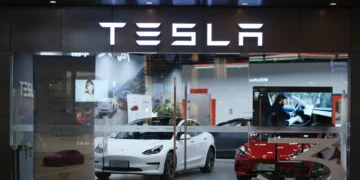
Tesla CRM Strategy: An Insider Blueprint Revealed (2024)

Walmart CRM Strategy: A Decade-Long Secret You Never Knew
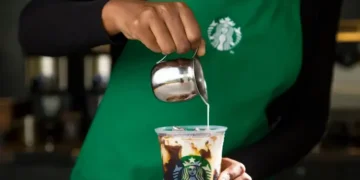
Starbucks CRM Strategy (Everything Worth Knowing – 2024)

Amazon CRM Strategy: The Blueprint Behind The E-commerce Giant

How CRM is Evolving: Unlocking the Future of CRM Tools

5 Best CRM Software For Tour Operators & Travel Agencies in 2024

10 Top CRM for Photographers (2024)

Mastering the CRM Selection Process: Your Ultimate Guide (2024)

Top 7 Best CRM For Event Management | Updated (2024)
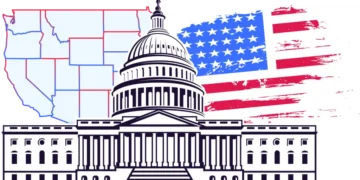
Top CRM For Political Campaigns | Updated (2024)

Top 10 Best CRM For Outside Sales Reps | Updated (2024)

CRM VS SRM: What’s the difference?

Top 5 Best Solar CRM in Australia | Updated (2024)

State Farm CRM Case Study: Unveiling the Secrets and Myths

Top 5 Best CRM Software For Businesses in Singapore | Updated (2024)

Top 5 Best CRM Software For Distributors | Updated (2024)

5 Best Pharmaceutical CRM Software | Updated (2024)

Top 5 Best CRM Software for Financial Advisors in Canada
- Case Studies
- Project Management
- Email Marketing
- Productivity
- Expense Management
- Artificial Intelligence
- BLOG & INSIGHTS
- Category : Case Studies , CRM
- Last updated on August 7, 2024
- By Viktor. A
- No Comments
- Posted by Viktor. A

Starbucks’ customer relationship management (CRM) strategy is the bedrock of the coffee conglomerate. From its inception, Starbucks has consistently created innovative CRM strategies and programs to reinforce its commitment to customer value.
Founded in 1971, Starbucks operates a chain of coffeehouses and roastery reserves, with headquarters in the United States of America. As of writing, they had 33,833 stores in 80 countries. This article is a Starbucks CRM case study that examines the key strategies behind the company’s growth.
I am concerned about any attrition in customer traffic at Starbucks, but I don’t want to use the economy, commodity prices, or consumer confidence as an excuse. We must maintain a value proposition to our customers as well as differentiate the Starbucks Experience. That is the key.
– Howard Schultz
History of Starbucks Timeline and Facts
Starbucks is founded
Howard Schultz joins Starbucks as director of retail operations and marketing.
Schultz convinces the founders of Starbucks to test the coffeehouse concept
Il Giornale acquires Starbucks
Becomes the first privately owned U.S. company to offer a stock option program that includes part-time employees.
Completes initial public offering (IPO)
Begins selling bottled Frappuccino®
Establishes The Starbucks Foundation
Establishes Starbucks Coffee Trading Company (SCTC) in Lausanne.
Acquires Seattle Coffee Company
Chairman Howard Schultz returns as chief executive officer
Acquires Evolution Fresh
Creates Starbucks College Achievement Plan with Arizona State University
Opens store and on-site training center in Queens, N.Y., and Ferguson, Mo
Announces new sustainability aspiration
4 Ways Starbucks Uses Customer Relationship Management (CRM)

1. Starbucks Loyalty Program
The Starbucks loyalty program is the company’s most significant and effective CRM strategy. This program has supposedly earned Starbucks a spot as the number one loyalty retail brand in the United States.

With an estimated active membership of 20 million, the loyalty program is the critical driver of Starbucks’s business growth. In 2019, Starbucks attributed 40% of its total sales to the Rewards Program. And even today, the program continues to deliver phenomenal results for the company.
“The Reward Program continues to be our most important business driver as new members contribute short-term increases in revenue and profit and long-term loyalty for years to come.” – Howard Schultz
Here’s how the program works. It is categorized into three levels – welcome, green, and gold. Users can transition from the welcome stage to the gold stage by increasing their purchase frequency, which earns them “stars”. The stars can be redeemed at any of their store locations for free food, drinks, and much more.
Besides the program’s free refills, it enables users to qualify for the Birthday Reward. Customers now shop at Starbucks for fun, not just to satisfy their immediate food or drink needs. Starbucks enjoys customer loyalty, retention, and revenue growth due to its innovative CRM strategy.
2. My Starbucks Idea
Launched in 2008 by Howard Schultz, the My Starbucks Idea aimed to put the customer at the center of their CRM strategy. It was Starbucks’ way of telling their customers that their ideas matter and are valuable.

A dedicated website page was created for the My Starbucks Idea initiative, which allows users to view and submit their ideas. Basically, the website has three main functionalities enabling users to submit a new idea, view other customers’ ideas, and see the implemented ideas.
Starbucks created an idea validation panel that validates all submitted ideas for the vital ones to implement. Also, it is with noting that the My Starbucks Idea was a wildly successful initiative. At the end of it, tons of ideas were captured, and the most potent ones were implemented. Here are some stats from the program:
• More than 150,000 ideas were generated
• About 277 of those ideas were implemented
• Cake Pops, Hazelnut Macchiato, and Free Wi-Fi are a few of the ideas that were borne out of this initiative.
3. Cansona Software
One of the most frequently asked questions about Starbucks is: What CRM does Starbucks use?
As of writing, Starbucks uses Cansona CRM software – an enterprise-grade business software system. This platform allows Starbucks to create and maintain its customer database, curate and collates customer data, and personalize customer experiences.
Since Cansona is an enterprise system, it might not be entirely convenient for small or medium-scale businesses. Therefore I will recommend the following:
- Pipedrive – If you’re big on sales and pipelines
- Salesmate – If you’re a coach, consultant, or trainer
- Zoho – If you’re looking for a CRM that is both affordable and efficient
- Salesforce – If you’re looking for an enterprise-grade CRM like Cansona System
The Best Overall

A sales-focused CRM that leverages AI to automate sales, lead & demand generation.
Best Budget Choice

Freshsales automates your sales process, and helps drives sustainable business growth.
Best for Workflows

Customize your workflows to track all aspects of the sales cycle, from lead gen to post-sale support.
Conclusions
Starbucks has indirectly created a CRM strategy playbook for customer loyalty. The core secrets of their age-long growth and customer allegiance have been summarised in this article.
Pick a few or all and run with them. Additionally, replicating their strategies is optional. You need to be creative with them. Once more, I recommend Pipedrive CRM , Salesmate , Salesforce , and Zoho CRM . Check and try them out. It’s a shortcut to replicating some of the strategies listed here.
Frequently Asked Questions
Starbucks’ CRM strategy focuses on leveraging technology to create personalized customer experiences. This includes the Starbucks Rewards program, mobile app integration, and the use of AI and data analytics to tailor promotions and offers to individual customer preferences.
Starbucks personalizes the customer experience through its mobile app and AI-driven insights. The app uses customer data to recommend drinks based on past purchases and preferences. AI-powered chatbots provide personalized assistance, while targeted marketing messages are crafted from analyzing customer behavior and preferences.
Starbucks uses AI to analyze customer data and provide personalized recommendations. The mobile app uses AI to suggest drinks based on a customer’s purchase history and preferences. AI-powered chatbots also offer personalized customer service, making recommendations and answering queries.

Viktor. A is a writer and researcher with experience writing about various topics, including CRM software, SaaS, finance, and technology. When he's not writing, he's swimming and traveling
Leave a Reply Cancel reply
Your email address will not be published. Required fields are marked *
Save my name, email, and website in this browser for the next time I comment.
Related Posts

Uber CRM Case Study: Customer-Centric Strategies of the Tech Giant

Top 5 Best CRM For Affiliate Marketing | Updated (2024)
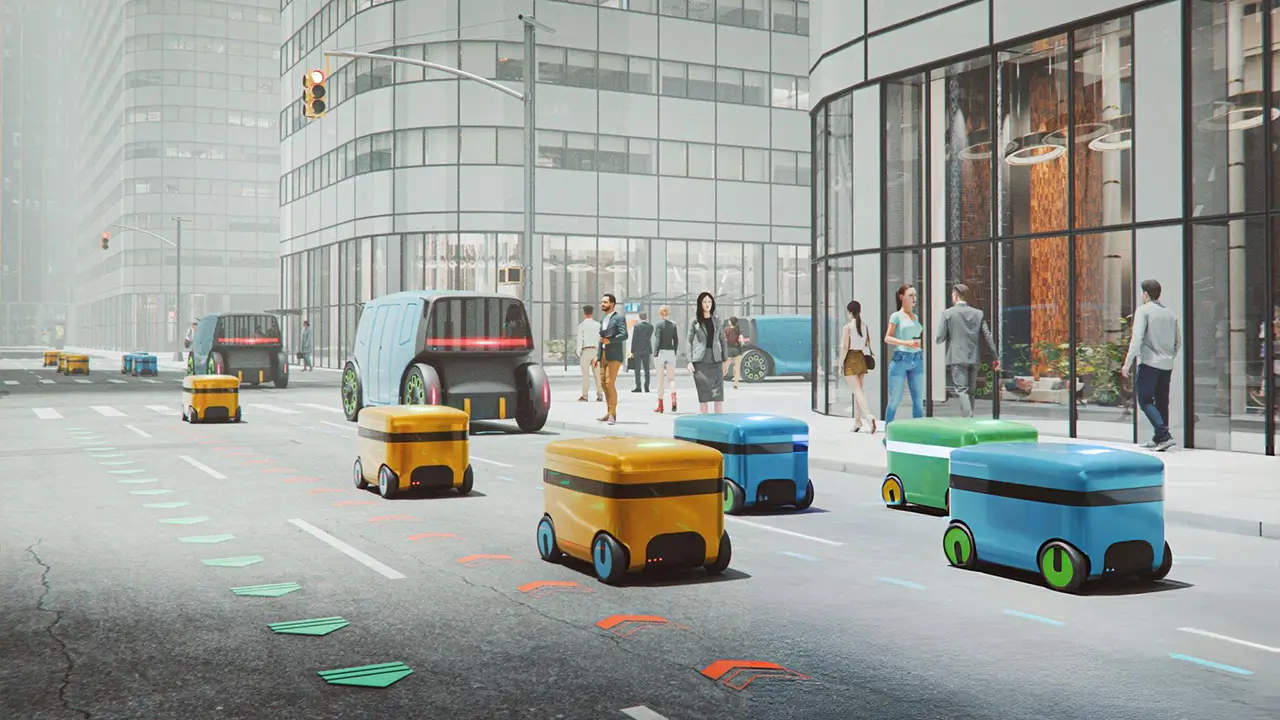
Employ in 150+ Countries Within Hours Without Breaking the Bank.
Table of Contents
About crmside.
CRMside is an online resource publication that focuses on CRM case studies, guides, product reviews, and expert tips, aimed at providing our readers with valuable insights and strategies to help maximize their CRM solutions and achieve business growth.
- Privacy Policy
- Terms of Use
NAVIGATIONS
- A Hub For CRM Resources
- Affiliate Disclaimer
© 2024 CRMSIDE.COM ALL RIGHTS RESERVED.
- BROWSE CRMs
Get Started With Pipedrive CRM for Free!
Automation, AI, Email Builder, Insights & Reporting, Customization and much more.

Customer management
Starbucks’ customer management case study.
- February 19, 2024

Starbucks, once a single storefront in Seattle, has burgeoned into a global coffee powerhouse, renowned for its quality brews and exceptional customer service. This transformation wasn’t just about expanding its footprint; it centered on mastering customer management —a critical factor in the retail and service sectors.
In industries where experiences and relationships outweigh transactions, Starbucks’ narrative from facing customer management challenges to setting industry benchmarks for customer centricity offers invaluable insights.
This case study delves into the strategies, innovations, and steadfast commitment to customer satisfaction that underscore Starbucks’ evolution into a model of customer management excellence .
Historical Context and Challenges
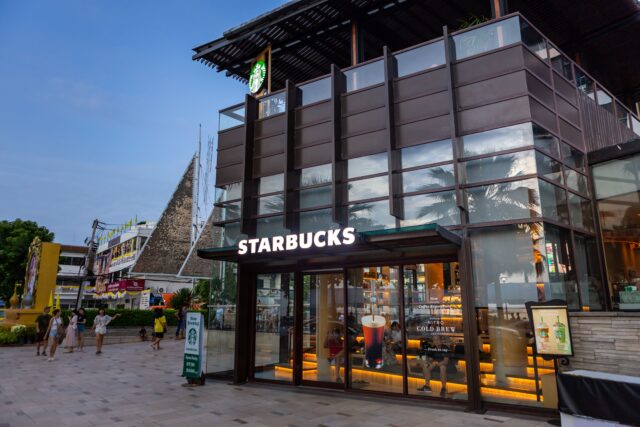
As Starbucks evolved into a global brand, it faced significant customer management challenges that threatened its customer-centric ethos. Initially, Starbucks enjoyed a reputation for intimate customer experiences and high-quality coffee.
However, rapid global expansion and the commodification of the coffee experience began to erode this perception. Specific incidents and trends highlighted the growing pains Starbucks faced in maintaining its customer service standards.
One of the primary challenges was the dilution of the Starbucks experience. As the number of stores increased, Starbucks struggled to maintain the personalized service that had defined its early success. Customers began to report inconsistent service quality, with some locations failing to live up to the company’s high standards.
This inconsistency was a symptom of broader operational challenges, including employee training and retention issues, which directly impacted customer satisfaction.
Customer feedback mechanisms at the time were not as developed, leading to a disconnect between Starbucks and its customer base. The company’s rapid expansion meant it was harder to track customer satisfaction trends effectively and respond to feedback swiftly.
This issue was compounded by the 2008 financial crisis, which saw Starbucks closing several underperforming stores and reevaluating its business strategy amidst declining sales and customer visits.
The broader impact of these challenges on Starbucks’ brand image and financial performance was significant. The perception of Starbucks shifted from a premium coffee experience to a more commoditized one, where the unique selling proposition of Starbucks was less about the customer experience and more about convenience. This shift threatened the core of Starbucks’ brand identity, which was built on customer connections and community.
Financially, the company saw a downturn in its profitability during this period. The financial crisis exacerbated existing problems, leading to a significant restructuring of the company’s operations.
Starbucks’ response to these challenges marked a turning point in its approach to customer management, initiating a series of strategic initiatives aimed at reclaiming its reputation for customer-centricity and operational excellence.
In the next sections, we’ll explore the turning point for Starbucks, the strategic overhaul undertaken to address these challenges, and the innovative approaches that helped Starbucks not only recover but also thrive by refocusing on customer management.
Turning Point

The turning point for Starbucks in prioritizing customer management came during the late 2000s, marked by a series of key events and realizations that led to a fundamental shift in the company’s approach to customer service and overall strategy.
One pivotal moment was the return of Howard Schultz as CEO in 2008 . Schultz, who had stepped down as CEO in 2000, returned to lead the company amid declining sales, store closures, and growing dissatisfaction among customers and employees alike.
Recognizing the urgent need to revitalize the brand and reconnect with customers, Schultz initiated a bold plan to refocus on Starbucks’ core values and customer experience.
Under Schultz’s leadership, Starbucks took several initial steps to address its customer management issues:
- Closing Stores for Barista Training: In a highly symbolic move, Starbucks temporarily closed approximately 7,100 U.S. stores for several hours to conduct a nationwide barista training program. This initiative aimed to reinforce the company’s commitment to coffee quality and customer service excellence.
- Reevaluating Store Expansion Plans: Starbucks reevaluated its aggressive store expansion strategy, recognizing that rapid growth had contributed to the dilution of the customer experience. The company shifted focus towards improving the performance of existing stores and ensuring new locations contributed positively to the brand’s value proposition.
- Enhancing Customer Feedback Mechanisms: Understanding the importance of customer feedback, Starbucks enhanced its mechanisms for gathering and responding to customer insights . This included the launch of “My Starbucks Idea,” a digital platform that allowed customers to submit suggestions for improvements, which the company could then implement.
- Revamping the Starbucks Experience: Schultz emphasized the need to revive the unique Starbucks experience, focusing on the ambiance of the stores, the quality of customer interactions, and the overall environment. This included redesigning stores, improving product offerings, and implementing initiatives aimed at creating a more engaging and personalized customer experience.
These initial steps marked the beginning of Starbucks’ journey toward customer management mastery. By acknowledging its shortcomings and taking decisive action to reconnect with its core values and customers, Starbucks set the stage for a comprehensive strategy overhaul that would ultimately redefine its approach to customer service and set new standards for the industry.
Strategic Overhaul
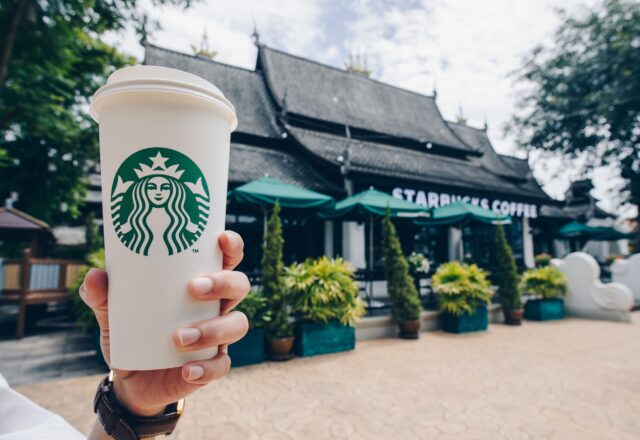
In response to the challenges it faced, Starbucks embarked on a comprehensive strategic overhaul focused on improving customer management. This strategy was multifaceted, addressing various aspects of the business from customer feedback to employee training, technology, and community initiatives.
Customer Feedback and Engagement
Starbucks recognized the critical role of customer feedback in guiding its improvements and rebuilding trust. The introduction of “My Starbucks Idea” was a significant step in integrating customer feedback mechanisms.
This platform allowed customers to submit, vote on, and discuss ideas directly with Starbucks, covering everything from product suggestions to environmental concerns. It democratized innovation and signaled to customers that their opinions were valued, leading to the implementation of numerous customer-generated ideas.
Employee Training and Empowerment
Employee training and empowerment became a cornerstone of Starbucks’ strategy to enhance the customer experience. Following the nationwide barista training program, Starbucks continued to invest heavily in its workforce.
This included not only technical coffee-making skills but also soft skills essential for customer service excellence. Baristas and store managers were empowered to make decisions that would improve customer satisfaction, such as remaking a drink if a customer was not completely satisfied.
This approach underscored the importance of each employee in contributing to the overall customer experience, resulting in a positive outcome on all major customer success metrics .
Technology and Innovation
Starbucks leveraged technology and innovation to improve customer convenience and personalization. The launch of the Starbucks mobile app, including mobile ordering and payment, was a game-changer, significantly reducing wait times and enhancing the customer experience.
The app’s integration with the Starbucks Rewards loyalty program offered personalized offers and recommendations, increasing customer engagement and retention . Through technology, Starbucks was able to offer a more seamless and customized experience to its customers, reinforcing its brand promise of convenience and personalization.
Community and Environmental Initiatives
Understanding the growing consumer demand for responsible and sustainable business practices, Starbucks intensified its community and environmental initiatives. Efforts such as ethically sourcing coffee, reducing waste through the promotion of reusable cups, and investing in local communities helped rebuild trust and loyalty among customers.
These initiatives demonstrated Starbucks’ commitment to corporate social responsibility and its alignment with customers’ values, further enhancing its brand image and customer relationships.
Through this strategic overhaul, Starbucks addressed the root causes of its customer management challenges.
By actively engaging with customers, empowering employees, leveraging technology, and committing to social responsibility, Starbucks not only improved its customer management but also set new standards for excellence in the retail industry.
This comprehensive approach to revitalization has solidified Starbucks’ position as a leader in customer experience, innovation, and community engagement.
Lessons Learned
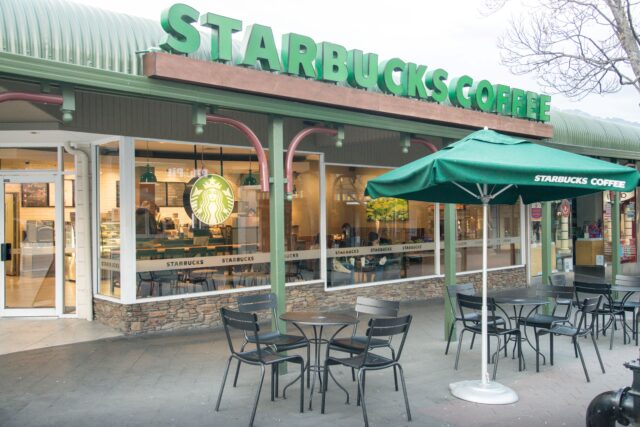
Starbucks’ transformation in customer management offers several key insights and lessons for other companies aiming to enhance their customer engagement and brand reputation. Here are the primary takeaways:
1. Embrace Customer Feedback
Starbucks demonstrated the value of actively listening to and engaging with customers. By implementing platforms like “My Starbucks Idea,” the company not only gathered invaluable insights but also fostered a sense of community and belonging among its customer base.
Lesson: Incorporating customer feedback—this could be through USSD Mobile Surveys offered by a platform like SeVO Poll —into business decisions can lead to innovative solutions and stronger customer loyalty.
2. Invest in Employee Empowerment
The role of baristas and store managers was pivotal in Starbucks’ turnaround. By investing in comprehensive training and empowering employees to make decisions that benefit the customer experience, Starbucks enhanced service quality and consistency.
Lesson: Empowered employees are more engaged and better equipped to deliver exceptional customer service, directly impacting customer satisfaction and loyalty.
3. Leverage Technology for Personalization
Starbucks’ use of mobile apps and loyalty programs to offer personalized experiences and conveniences to customers set a new standard in the retail industry.
Lesson: Technology can be a powerful tool in understanding and catering to individual customer preferences, driving both satisfaction and engagement.
4. Commit to Corporate Social Responsibility
Starbucks’ focus on community and environmental initiatives resonated with customers’ values, rebuilding trust and enhancing loyalty.
Lesson: A genuine commitment to social responsibility can strengthen a brand’s reputation and appeal to consumers’ desire to support ethical and sustainable businesses.
Importance of a Customer-Centric Approach
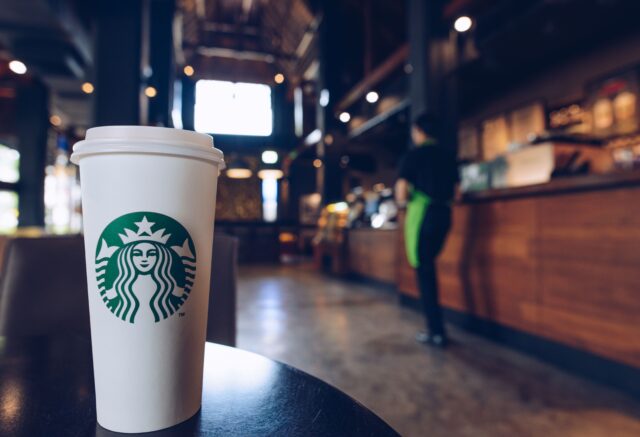
The overarching lesson from Starbucks’ journey is the importance of maintaining a customer-centric approach. This involves continuously seeking ways to understand and meet customer needs, preferences, and values. A customer-centric strategy not only helps in navigating challenges but also in identifying opportunities for growth and innovation.
By prioritizing customer management and adopting a holistic approach to business operations, Starbucks not only navigated through its challenges but also emerged stronger, with a reinforced brand reputation and a loyal customer base.
These lessons underscore the value of integrating customer feedback, empowering employees, leveraging technology, and upholding social responsibility as core elements of a successful customer management strategy.
Key Takeaways
Starbucks’ journey from facing significant customer management challenges to achieving mastery in the field underscores the transformative power of a customer-centric approach.
Through strategic overhauls in feedback mechanisms, employee training and empowerment, technology integration, and commitment to corporate social responsibility, Starbucks not only addressed its immediate challenges but also laid the foundation for sustained success.
This evolution highlights the critical role that effective customer management plays in maintaining a strong brand reputation and fostering deep connections with consumers.
The key to Starbucks’ ongoing success lies in its acknowledgment that customer management is a continuous journey, not a destination. The retail landscape and customer expectations are ever-evolving, demanding constant innovation and adaptation.
Starbucks’ commitment to listening to its customers, empowering its employees, leveraging new technologies for personalization, and upholding its social responsibilities demonstrates a model for other companies to follow.
Reflecting on Starbucks’ experience, it becomes clear that effective customer management is integral to building and maintaining a successful brand. It requires a holistic approach that permeates every aspect of the business, from the frontline employees who interact with customers daily to the strategic decisions made at the corporate level. By placing the customer at the heart of their operations, companies can navigate the complexities of the modern retail environment and achieve enduring success.
Starbucks’ story is a testament to the fact that with the right strategies, challenges in customer management can be transformed into opportunities for growth, innovation, and stronger customer relationships. It serves as a reminder that in the competitive landscape of the retail and service industries, the companies that thrive are those that remain unwaveringly committed to enhancing their customer management practices.

Related aritcles
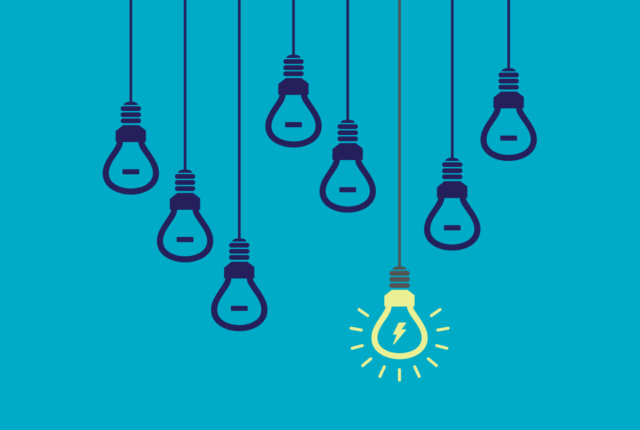
How to Extract Actionable Insights from Customer Data
Welcome to the wild, wonderful world of customer data, where numbers dance, patterns emerge, and

How to Use Social Media Ads for Customer Acquisition
Did you know that 54% of social browsers use social media to research products? Imagine
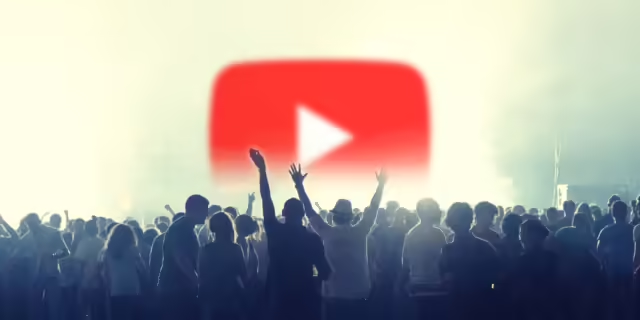
The Ultimate Guide to Starting a YouTube Channel in Ghana
Imagine this: Kwame, a young Ghanaian with a knack for storytelling, started a YouTube channel
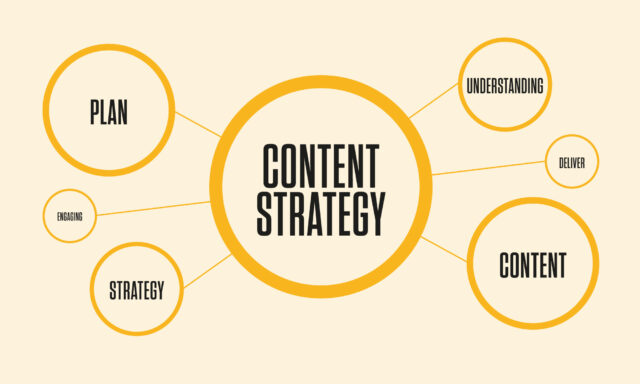
How to Create a Content Strategy for a Ghanaian Audience
Imagine this: you’re scrolling through your phone, bombarded with content from all corners of the

Discover the latest updates
Never miss out on a moment with us., by submitting this form, you indicate that you have read and agreed to gwo sevo's privacy policy, our socials, © 2024 gwo sevo. all rights reserved..
- Customer Acquisition
- Customer Insights
Quick Links
- TXT Connect
Contact Info
- No.71 Swaniker Street Abelenkpe, Accra
- 0302-797680
- [email protected]
- 053107232 / 0302797680
Stay in Touch Be the first to know about new job positions.
- Collect & Maintain Data Collect and organize data with forms, fields and summary templates and automate email rules for content management.
- Streamline Innovation Processes Create processes using our easy-to-use interface, and then apply these processes to different projects for consistent and efficient execution.
- Real Time Visibility & Reporting Get instant insights with real-time reports. Easily create powerful PowerPoint presentations from your latest data to effectively communicate and make decisions.
- Customization and Flexibility Tailored evaluation grids, forms, and processes, ensuring that the platform aligns with the unique workflow of each organization.
- Braineet Crowdsourcing
- Braineet Workflow
- Innovation Management
- Project Portfolio Management
- Innovation Process
- Idea Management
- Open Innovation
- New Product Development
- Gartner Guide Braineet & ITONICS named by Gartner 3rd year in a row.
- Accessibility & CSR RGA 4.1>80% and Ecovadis Sustainability Medal.
- Innovation Rockstars Podcast The innovation podcast for real innovation rockstars.
- Academy Take your innovation skills to the next level.
- Why Braineet Braineet vs. other innovation management software.
- About Braineet Our mission, value and open positions.
- Contact Contact us using this page. We do our best to reply to every email.
- SEARCH Search
- Book a Free Demo
My Starbucks Idea: An Open Innovation Case Study

Since opening its first store back in 1996, the Seattle-based coffee behemoth now includes almost 30,000 coffee shops around the world and is valued at a staggering $30 billion . A strong commitment to open innovation has helped to drive this incredible growth.
This zest for open innovation led to the "My Starbucks Idea" platform, a customer participation experiment. Now that the company has retired this platform after nearly ten years, we thought it would be a good opportunity to look back and ask a few questions.
So, what can a case study of the "My Starbucks Idea" platform tell us about open innovation? What were the benefits to Starbucks from managing this platform, and how can other businesses take advantage of these benefits?
Pour yourself a little cold brew, and we’ll show you how it all came together.
How did they do it?
As a company, Starbucks has always placed a lot of value on refining its products and procedures following customer feedback. In the company’s earliest years, this was reflected in simple systems like suggestion boxes and customer surveys.
In 2008, however, founder Howard Schultz launched the open innovation platform "My Starbucks Idea". This platform encouraged customers and fans to share their ideas and suggestions for how to make the company’s beloved products even better.
“We need to put ourselves in the shoes of our customers,” Schultz said at the time . “That is my new battle cry. Live and breathe Starbucks the way our customers do.”
As it turns out, the as-yet undecided 2020 Presidential candidate was on to something. Starbucks customers had a real thirst to share their ideas: over the first five years of operation, the platform received over 150,000 ideas, and the company put hundreds of them to use.

The format was simple. All customers had to do was create a profile, write (and categorize) their suggestion, and submit it for others to comment on. If the idea gathered enough steam, or if the Starbucks administrators liked the looks of it, it could then be adopted by the company.
Plenty of companies crowdsource product ideas via customers. So, what made "My Starbucks Idea" unique?
What made "My Starbucks Idea" unique?
"My Starbucks Idea" was a lot more than just a fancy suggestion box.
To help encourage a community of fans, Starbucks enabled users to vote and comment on ideas they liked. There was also a public leaderboard showing the most dedicated fans, as well as those with the most popular ideas.
Users could also see profiles for the Starbucks ‘Idea Partners’ - the company representatives tasked with managing and monitoring online discussion and working with customers on their suggestions. This helped put a human face on the company.

This blend of open innovation, customer co-creation, and fan community site proved immensely popular. Not only did it create a lot of great product innovations for Starbucks, but it also helped to drive increased customer loyalty.
Through actively managing the "My Starbucks Idea" platform, Starbucks engaged customers, making them feel they were being listened to. By rolling out fan-driven ideas like cake pops and pumpkin spice lattes, Starbucks created greater product diversity.
In June 2018, after almost a decade, the company retired the "My Starbucks Idea" platform. Starbucks still encourages its customers and fans to submit their suggestions for new products on Twitter , of course, as well as via its website .
Now, let’s dig into the detail a little more. What were the results of the "My Starbucks Idea" platform, and what can these results tell us about customer-driven innovation?
Cake pops and pumpkin spice: the results of "My Starbucks Idea"
By paying attention to customer preferences, Starbucks was able to hold its spot as the market leader, even in a rapidly changing industry like the food and beverage sector.
The "My Starbucks Idea" concept was based on a core belief: customers know what they want.
The company’s commitment to this concept led to fans submitting over 150,000 ideas, of which hundreds were adopted. And these weren’t just run-of-the-mill suggestions, either - they include fan favorites like hazelnut macchiatos.
More than just receiving product suggestions, however, the platform also led to suggestions around process improvements, including finessing Starbucks’ mobile payment systems and offering free Wi-Fi.
For a better overview of the range of innovations submitted through the "My Starbucks Idea" platform, check out the following infographic, published in 2013:

These examples demonstrate the value of open innovation. By handing power over to customers, and by giving them an incentive to participate by recognizing their ideas, Starbucks was able to channel a lot of crowd creativity.
So, it’s clear that the "My Starbucks Idea" platform led to a huge amount of valuable product innovation. But beyond just suggesting new drink flavors, what were the wider benefits of this experiment?
What were the benefits for Starbucks?
First, there’s the obvious benefit: empowering customers to make suggestions for product improvements meant that Starbucks had access to new, and potentially very valuable, ideas. Many of these were things that would only have occurred to dedicated customers.
The "My Starbucks Idea" platform created significant benefits for Starbucks.
Besides the simple value of these ideas, however, the platform also helped generate a lot of media attention and free advertising. By encouraging die-hard fans to engage online, Starbucks created a new way to market their products to their most valuable customer segment.
The platform also served as a market research tool, too. Many thousands of fans signed up to submit their ideas, and in doing so provided the company with demographic information. This allowed Starbucks to build detailed customer profiles.
The benefit didn’t go just one way, though: Starbucks customers also got plenty of value out of the platform. By engaging with the company, customers experienced a greater sense of inclusiveness, with the platform helping to build a real community.
It wasn’t all sunshine and rainbows, however. As significant as the benefits were for both Starbucks and its customers, the "My Starbucks Idea" platform still created a number of risks to be managed.
How did Starbucks manage the risks of open innovation?
As we’ve seen in the examples of General Motors crowdsourcing advertisement suggestions on Twitter, handing the keyboard over to the customer can open a company up for online criticism, and even harassment.
Sometimes, open innovation can be something of a double-edged sword.
For "My Starbucks Idea", this risk was definitely present. Starbucks employees were required to sift through the online ideas and comments on a regular basis to weed out any trolling or abuse , and to prevent the platform from becoming a tool for corporate mockery.
Managing the risks of online abuse and platform misuse took a lot of dedicated resources, requiring an active approach from the company. Despite a strict set of community guidelines, the platform still required a lot of moderating.
But enough about the negative stuff. What can "My Starbucks Idea" tell us as a case study in open innovation, and how can you put these ideas to use in your own business?
How to make open innovation work for you
As we’ve seen in our article on ten companies showing us how to get it right when it comes to customer co-creation, successful open innovation takes careful planning and foresight.
If you want to make open innovation work for you and your customers, you need to:
- Appeal to the intrinsic motivations of your fans and customers
- Set clear limits and guidelines for the exercise
- Encourage and reward different perspectives
Embrace open communication
Let’s take a closer look at these things one by one.
Appeal to intrinsic motivations
Whether it’s a beer fan giving Anheuser-Busch suggestions on their new line of craft lager , or the LEGO community suggesting new toy sets , nobody ever wants to give away a great idea for free. If a product suggestion is valuable, it’s only fair that a company should pay for it.

So, before you ask your customers and fans to put on their thinking hats, give them a reason to participate in the exercise. Whether it’s monetary compensation, public recognition, or a mixture of the two, there should be something on the line if their idea succeeds.
This is something Starbucks got right with its open innovation platform. Not only did fans get the public recognition associated with having their names attached to the ideas, they were also eligible for monetary compensation, too.
Set clear guidelines and limits
Sometimes, a little structure can be a great way to encourage creativity.
Rather than simply asking fans for ideas, "My Starbucks Idea" included guiding categories for suggestions. These included ‘products’, ‘atmosphere & location’, ‘service systems’, and others. These categories helped guide the submissions process and helped stimulate fan creativity.
Starbucks also set clear community guidelines to help manage online exchanges, too. This not only gave customers a more secure environment in which to share their ideas, it also cut down the amount of work for Starbucks employees managing the site. Win-win!
Encourage different perspectives
The true value of open innovation rests in the ability to encourage customers to share different perspectives on a product or service. After all, you can have the world’s most amazing thinkers on your payroll, but having access to a broad pool of opinions will still get the best ideas.
Starbucks really got this right with "My Starbucks Idea". By actively encouraging and rewarding a range of perspectives and values, the company was able to unlock the innovative potential of a huge number of people, with great results.
If you’re thinking about how to embrace open innovation, make it a priority to encourage people with a range of different perspectives, opinions, and life experience to participate.
When it comes to encouraging innovation , open communication is a must - especially given the rise of company representation on social media platforms like Twitter and Instagram.
Businesses need to engage their customers with transparency, consistency, and, above all else, respect. If open innovation participants feel they’re being listened to, and are getting a trusted source of information, they’re more likely to contribute.
Once again, Starbucks really nailed this with "My Starbucks Idea". By communicating regularly with fans, and providing a clear source of dependable information about the platform, Starbucks was able to build trust and reward fans for their ideas.
For Starbucks, open innovation is much more than just cake pops.
Don't just take it from us - here is Matthew Guiste, one-time Director of Social Media at Starbucks, talking about the value of open innovation for the company.
By unleashing the creative potential of its diverse customer base via the "My Starbucks Idea" platform, Starbucks was able to source valuable new product ideas, engage with their most dedicated fans and gather market information to stay on top of trends.
All it took was a little investment in a web platform, some community guidelines, and a commitment to open communication. That’s a small price to pay for such a valuable tool.

15 Essential Books on Innovation

What Exactly Is Open Innovation?

Customer Co-Creation Examples: 12 Companies Doing It Right
Starbucks Change Management Case Study
Change is a constant in any business, and successful organizations must adapt to changes in the industry, market, and consumer preferences to remain competitive.
The ability to manage change is crucial to the survival of businesses in today’s dynamic market environment.
This is why change management is a vital aspect of business operations.
In this blog post, we will explore the case study of Starbucks’ change management, discussing their need for change, strategies implemented, challenges faced, and the results of the change.
We will also examine the lessons learned from this experience and the importance of change management in businesses.
So let’s dive into the Starbucks change management case study and see how it can inform our understanding of successful change management.
History and Growth of Starbucks
Starbucks is an American multinational coffee company founded in Seattle, Washington, in 1971. The founders of Starbucks were three friends, Jerry Baldwin, Zev Siegl, and Gordon Bowker.
Starbucks initially started as a single store selling high-quality coffee beans and equipment. It was only in the early 1980s that Howard Schultz joined Starbucks as the Director of Retail Operations and Marketing. It was his vision of a coffeehouse culture that transformed Starbucks into the iconic brand it is today.
Schultz convinced the founders to test a coffeehouse concept in downtown Seattle, and in 1984, the first Starbucks Coffeehouse was opened. The concept was an immediate success, and Starbucks quickly expanded throughout Seattle and the United States.
In 1992, Starbucks went public, and by 2000, the company had over 3,000 stores worldwide. By 2018, Starbucks had more than 30,000 stores across 80 countries.
Starbucks faced numerous challenges and crisis during its journey but it sailed through the tough times and surfaced as a text book examples of crisis management.
The need for change at Starbucks
Despite its growth and success, Starbucks faced significant challenges in the late 2000s. In 2007-2008, the global financial crisis impacted Starbucks, leading to the closure of several underperforming stores. Furthermore, the company’s rapid expansion had led to a loss of focus on its core business, and the quality of its products had suffered. Starbucks’ profitability and customer satisfaction were on the decline, and the company needed to make significant changes to survive in the highly competitive coffee industry. In response, the company realized the need for change and embarked on a comprehensive change management program.
Reasons for the change
The need for change at Starbucks was evident, and the company identified several key areas that needed improvement. Firstly, Starbucks needed to streamline its operations to reduce costs and increase efficiency. Secondly, it needed to refocus on its core business of selling high-quality coffee and related products. Thirdly, Starbucks needed to improve its customer service and store experience to boost customer satisfaction and loyalty.
Strategies implemented by Starbucks
To achieve its goals, Starbucks implemented several strategies. Firstly, it closed underperforming stores and streamlined its operations to reduce costs. Secondly, it refocused on its core business by introducing new blends and improving the quality of its products. Thirdly, Starbucks launched a customer feedback program to understand customers’ needs and preferences better. Fourthly, Starbucks introduced new store designs and layouts to improve the in-store experience. Finally, Starbucks invested heavily in training its employees to provide excellent customer service and maintain the high standards of its products.
Challenges faced by Starbucks during the change
The change management process at Starbucks was not without challenges. Firstly, some employees resisted the changes, and there was a need to ensure that everyone was on board with the new direction of the company. Secondly, there was a need to balance the introduction of new products and store designs with maintaining the company’s core values and identity. Thirdly, there was a risk of losing customers during the change process, and Starbucks had to ensure that it maintained its customer base while attracting new customers.
Results of the change management at Starbucks
The change management program at Starbucks was successful, and the company saw significant improvements in its financial performance and customer satisfaction. Firstly, Starbucks’ profitability improved significantly, and the company’s share price increased. Secondly, the quality of Starbucks’ products improved, and the company introduced new blends and products that were well-received by customers. Thirdly, the in-store experience was improved, and the new store designs and layouts were well-received by customers. Finally, customer satisfaction and loyalty increased, and Starbucks regained its position as a leading brand in the coffee industry
05 Factors that explained successful implementation of change management at Starbucks
There were several factors that contributed to the successful implementation of change management at Starbucks. Here are five key factors:
1. Strong Leadership
Starbucks’ success in implementing change management can be attributed to the strong leadership of the company. The leaders at Starbucks had a clear vision of what changes were needed, and they were committed to making those changes happen. They communicated the need for change effectively to all stakeholders and provided the resources and support necessary for the change process to succeed.
The leadership team also ensured that everyone in the organization understood their roles in the change process and provided guidance and direction throughout the implementation. Their leadership helped to create a sense of urgency and momentum, which was critical for the success of the change management program
2. Effective Communication
Effective communication was a crucial factor in the success of Starbucks’ change management program. The company communicated the changes to employees, customers, and stakeholders effectively, ensuring that everyone was informed and understood the changes. Starbucks used a variety of communication channels, including town hall meetings, newsletters, and training sessions, to ensure that information was disseminated widely and consistently.
By keeping everyone informed and engaged, Starbucks was able to create a shared understanding of the changes and gain buy-in from employees, customers, and stakeholders. Effective communication also helped to build trust and credibility with stakeholders, which was essential for the success of the change management program
3. Employees Engagement
Employee engagement played a critical role in the success of Starbucks’ change management program. The company engaged its employees in the change process by involving them in planning and implementation and ensuring that they had the necessary training and resources to implement the changes effectively. Starbucks also recognized and rewarded employees who embraced the changes and demonstrated excellent customer service.
This approach helped to create a sense of ownership and accountability among employees, which was essential for the success of the change management program. By empowering employees and recognizing their contributions, Starbucks was able to create a culture of continuous improvement and innovation, which helped to sustain the changes over time.
4. Customer Focus
Putting the customer at the center of its change management program was a key factor in Starbucks’ success. The company listened to customer feedback and made changes to its products and services to meet their needs and preferences. Starbucks also focused on improving the in-store experience to enhance customer satisfaction. By focusing on the customer, Starbucks was able to improve its products and services, which led to increased customer loyalty and retention.
By enhancing the in-store experience, Starbucks was able to create a more inviting and comfortable environment for its customers, which helped to increase sales and revenue. By making the customer a priority, Starbucks was able to build a strong brand and create a loyal customer base, which was essential for the success of its change management program
5. Flexibility
Flexibility was a critical factor in the success of Starbucks’ change management program. The company was flexible and adaptable during the change process, making adjustments to its strategies and plans as needed. Starbucks was open to feedback and suggestions from employees and customers, which helped the company to identify areas for improvement and make changes accordingly.
Starbucks recognized that change was an ongoing process and continued to make improvements over time. This approach helped Starbucks to stay ahead of the curve and remain competitive in a rapidly changing market. By being flexible and adaptable, Starbucks was able to anticipate and respond to changes in the market, which was essential for the success of its change management program.
Final Thoughts on Starbucks Change Management Experience
The Starbucks change management experience offers valuable insights into how companies can successfully navigate and implement change. Through strong leadership, effective communication, employee engagement, customer focus, and flexibility, Starbucks was able to successfully implement changes that resulted in improved performance, increased customer loyalty, and sustained growth.
Starbucks’ approach to change management shows that it is possible to implement significant changes while still maintaining the core values and identity of a company. By keeping the customer at the center of its change management program and engaging its employees, Starbucks was able to create a culture of continuous improvement and innovation, which helped to sustain the changes over time.
Overall, the Starbucks change management experience serves as a valuable case study for companies seeking to implement change and improve their performance. By following the lessons learned from Starbucks, companies can increase the likelihood of successful implementation of change management and create a culture of innovation and continuous improvement that can drive sustained growth and success.
About The Author
Tahir Abbas
Related posts.
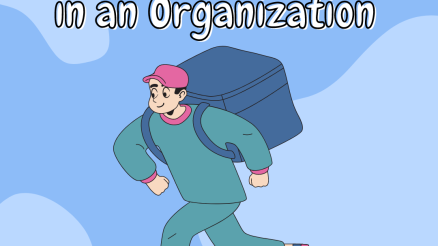
Too Much Change in an Organization – Consequences and How to Avoid it?
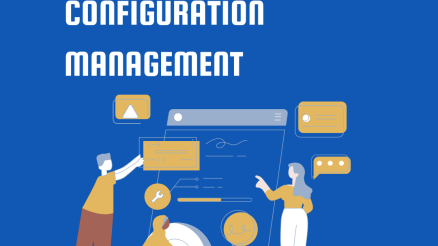
Difference Between Change Management and Configuration Management
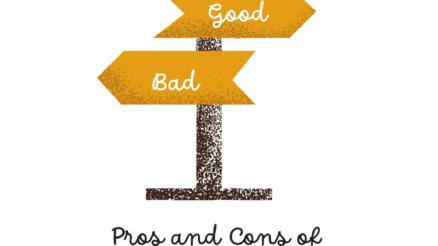
Pros and Cons of Change Management
Customer Relationship Management as a Tool to Enhance Customer Loyalty with Respect to Starbucks
17 Pages Posted: 17 Mar 2023
NMIMS University, NMIMS Kirit P. Mehta School of Law
Date Written: March 13, 2023
Effective CRM is a key driver of customer loyalty, assisting businesses in developing stronger, more meaningful relationships with their customers, thereby promoting long-term growth and success. One can provide a better customer experience, improve customer satisfaction, and increase customer loyalty by leveraging customer data and insights. This research analyses Starbucks in depth, a global coffee chain known for its customer-focused approach and strong brand loyalty. It investigates the role of Customer Relationship Management (CRM) in increasing customer loyalty to Starbucks. The paper begins by defining CRM and its importance in terms of establishing and maintaining customer loyalty. The following section provides an overview of Starbucks and its business model. The paper also investigates Starbucks' various CRM strategies, such as its mobile app, loyalty programme, and customer service. Finally, the paper summarises the key findings and offers insights into how Starbucks can continue to leverage CRM to improve customer loyalty and drive business growth. It additionally has primary data demonstrating the efficiency of the CRM strategies of Starbucks.
Keywords: customer loyalty, customer-focused, loyalty programme
Suggested Citation: Suggested Citation
Mahek Jain (Contact Author)
Nmims university, nmims kirit p. mehta school of law ( email ), do you have a job opening that you would like to promote on ssrn, paper statistics, related ejournals, marketing science ejournal.
Subscribe to this fee journal for more curated articles on this topic

- AI services
Starbucks: Mastering Growth with Data-Driven Strategies
Explore Starbucks' journey in using big data and analytics for enhancing customer experiences and driving growth, offering key insights for all sectors.

Introduction: Harnessing Analytics in a Customer-Centric Approach
In the fast-paced and ever-evolving food and beverage industry, Starbucks stands out as a prime example of how to effectively use analytics to enhance customer experiences and streamline operations. This article delves into Starbucks' journey with analytics, charting the path the company has taken to leverage data to transform its business model and drive growth.
Background: Starbucks' Evolution with Data Analytics
Since its inception, Starbucks has recognized the critical importance of staying agile and innovative in an industry characterized by rapidly shifting consumer tastes and expectations. The integration of analytics into its core business practices marks a significant step in this journey. Through the development and implementation of sophisticated analytical software, Starbucks has been able to not only keep pace with market trends but also actively influence and shape customer experiences. This strategic use of data analytics has enabled Starbucks to streamline its operations efficiently and drive its expansion strategies, positioning the company at the forefront of the industry.
The story of Starbucks' evolution with data analytics is one of transformation and foresight. Embracing analytical software development as a central component of its business strategy, Starbucks has successfully navigated the complexities of the modern market. This approach has allowed the company to continuously innovate, delivering personalized customer experiences, optimizing store locations, and introducing new products that resonate with customers' evolving preferences. The Starbucks experience thus serves as a compelling case study of the power of analytics to drive business success and growth in the food and beverage sector.
The Critical Role of Analytics in Modern Business
In today’s dynamic business landscape, analytics has emerged as an indispensable tool, particularly for customer-focused businesses like Starbucks. The ability to analyze and utilize vast amounts of customer data has proven to be a key driver of innovation, efficiency, and customer satisfaction. Analytics provides insights that enable businesses to understand and predict customer behavior, tailor marketing strategies, optimize operational processes, and make informed decisions for future growth.
Starbucks’s Analytical Strategies for Business Excellence
- Personalizing the Customer Experience
Starbucks has taken customer personalization to the next level by utilizing data collected from its stores and mobile app, which boasts over 17 million members. Through the Starbucks mobile app, the company gathers detailed information about what, where, and when customers buy their coffee. This data is then processed through the Digital Flywheel program, a cloud-based artificial intelligence engine that provides highly accurate food and drink recommendations. This system ensures that even when customers visit a new Starbucks location, they receive a personalized experience. The store's point-of-sale system, integrated with the customer's mobile app, can identify them and inform the barista of their preferred order, creating a seamless and personalized customer experience.
Strategic Store Expansion Using Data
In its strategic expansion efforts, Starbucks leverages location-based analytics using Atlas, a sophisticated mapping and business intelligence tool developed by Esri. This tool allows Starbucks to analyze a wealth of data, including population density, income levels, traffic patterns, competitor presence, and proximity to existing Starbucks stores. Such in-depth analysis helps in identifying the most strategic locations for new store openings. Additionally, this data-driven approach enables Starbucks to predict potential revenues, profits, and other key performance indicators for each new location, ensuring that each new store is positioned for maximum success.
Menu Customization Based on Regional Preferences
Starbucks employs analytics to understand regional taste preferences, enabling the brand to offer customized menu items that cater to local tastes. This approach not only enhances customer satisfaction but also drives repeat business. By analyzing customer preferences, Starbucks can adapt its menu to suit local tastes and dietary habits, ensuring that its offerings remain relevant and appealing across different regions.
New Product Introduction Informed by Customer Data
When introducing new products, Starbucks turns to its wealth of customer data for guidance. This strategy was particularly effective when the company expanded its product lines into grocery stores. For instance, data revealed that 43% of tea-drinking customers prefer no sugar, leading to the introduction of unsweetened ice tea lines. Similarly, recognizing that 25% of consumers enjoy black coffee without milk, Starbucks launched a new line of black iced coffee. This data-driven approach to product development ensures that new offerings are aligned with customer preferences, enhancing the likelihood of their success in the market.
The Importance of Software in Deploying Analytics Effectively
The successful deployment and integration of analytics into Starbucks's operations have been significantly empowered by the use of custom software solutions. These software tools, developed by companies specializing in technological innovation like SovTech, play an indispensable role in enabling businesses to effectively harness the power of analytics. In the case of Starbucks, custom software solutions have been the key to integrating complex analytics tools seamlessly across various facets of its business, from customer service to strategic planning and operational management.
Custom software solutions offer the flexibility and scalability necessary to handle the vast and varied data sets that a company like Starbucks generates. This capability is crucial for extracting meaningful insights from customer interactions, sales data, supply chain logistics, and more. For example, Starbucks's use of its loyalty program and mobile app data to personalize customer experiences requires sophisticated software that can process and analyze data in real-time, offering personalized recommendations and enhancing customer engagement.
Moreover, these custom software solutions are tailored to meet the unique needs of Starbucks, ensuring that the analytical tools are not only powerful but also aligned with the company's specific business objectives and operational workflows. This alignment is vital in ensuring that the data analytics drive actionable insights that are relevant and can be effectively utilized in decision-making processes. Whether it's optimizing store locations, customizing menu items, or predicting market trends, the software ensures that the analytics are not just theoretical but translate into tangible business improvements.
In essence, the importance of software in deploying analytics effectively at Starbucks cannot be overstated. It is the bridge that connects the wealth of data to actionable business strategies and operations. As Starbucks continues to innovate and lead in the food and beverage industry, the role of advanced, custom software solutions in harnessing the power of analytics will remain a critical component of its ongoing success and evolution.
Conclusion: Embracing Analytics for Sustained Growth
Starbucks's strategic embrace of analytics serves as a compelling model for how data can drive business innovation, growth, and sustainability. The company's journey vividly demonstrates the transformative impact of leveraging big data, analytics, and other technologies , augmented by the support of custom software development. Starbucks has adeptly used analytics to gain deep insights into customer preferences, leading to enhanced personalization and customer engagement. This approach, coupled with the optimization of operations and strategic store expansions, underscores the vast potential of analytics in shaping business success.
For companies aspiring to replicate Starbucks's success, the key takeaway is the importance of investing in analytics and partnering with firms specializing in custom analytical software development. Such partnerships provide businesses with the tools and expertise needed to turn data into actionable insights, driving informed decision-making and innovative strategies. This approach is not just about adapting to current market trends; it's about foreseeing future opportunities and positioning the business for sustained growth. Starbucks’s story is a testament to the power of analytics in creating a competitive edge and setting new benchmarks in the industry. It highlights that in the modern business landscape, embracing analytics and custom software solutions is not merely an option but a strategic imperative for achieving long-term success and market leadership.

Discover more epic software blogs

The Guide to DevOps in Software Development Services
What is Green Software Development and Why is it Important?
Scale your development team faster with Scrums.com
Academia.edu no longer supports Internet Explorer.
To browse Academia.edu and the wider internet faster and more securely, please take a few seconds to upgrade your browser .
Enter the email address you signed up with and we'll email you a reset link.
- We're Hiring!
- Help Center

Starbucks Case Study: Innovation in CRM strategies, means of enabling E-Commerce , Oxford University Press

Loading Preview
Sorry, preview is currently unavailable. You can download the paper by clicking the button above.
RELATED TOPICS
- We're Hiring!
- Help Center
- Find new research papers in:
- Health Sciences
- Earth Sciences
- Cognitive Science
- Mathematics
- Computer Science
- Academia ©2024
Don't miss tomorrow's retail industry news
Let Retail Dive's free newsletter keep you informed, straight from your inbox.
- Daily Dive M-F
- DTC Weekly Every Tuesday
- Marketing Weekly Every Wednesday
- Tech Weekly Every Thursday
- Operations Weekly Every Monday

How Starbucks builds customer relationships to improve bottom-line figures
Brooke Cagle, Unsplash

Running a business is never just about delivering a product people want. While fulfilling needs is important for a business to survive, building positive customer relationships is necessary for a brand to thrive and expand. It is the quality of human relationships and the customer’s affinity with your business that influence their willingness to purchase and their satisfaction with what they bought after the fact.
Over 50% of customers say they experience buyer’s remorse or negative emotions such as guilt and regret after making a purchase. All this results in a rising rate of returns and customers reacting emotionally at the slightest deviation from expectations. These factors feed into growing chargeback claims, with 65% of merchants reporting a rise in chargebacks and growing instances of friendly fraud over the past three years.
Building a brand that resonates with their customers on many levels rarely happens organically. Starbucks' ability to create loyal customers through innovative customer relationship strategies has had a significant impact on their bottom-line figures, and here's how they did it.
Understanding a customer relationship strategy
At the root of Starbucks' success is their ability to create a sense of community and belonging among their customers. Starbucks goes beyond being just a coffee shop and has become a part of many people's daily routines. The company has managed to create a welcoming and cozy atmosphere in their stores with comfortable seating, warm lighting, and the aroma of freshly brewed coffee.
Innovating in-store experiences
Creating a welcoming atmosphere.
Starbucks does a great job at making customers feel at home in their stores by offering comfortable seating and creating a calming atmosphere. The music, lighting, and decor all contribute to an ambiance that patrons find appealing and relaxing. Blurring the lines between home and work environments creates a coveted “third place” for where customers can feel comfortable whether they are making a quick routine stop, or settling in to work remotely in a lively and social setting.
The role of baristas in building relationships
Baristas play a vital role in creating a positive customer experience . They're trained to be friendly, attentive, and knowledgeable about the products. A focus on customer service and people-oriented hiring makes customers feel welcome and appreciated. Offering the ability to personalize and customize most, if not all menu items goes a long way in making the customer feel like their order is being made with attention, for them. A simple gesture like including a customer’s name on their beverage provides another simple opportunity to connect in ways where other retailers fall short.
Exclusive events and promotions
Creating exclusive events and promotions get their customers excited and interested in the company. These events can vary from launching new menu items to music concerts and art exhibits. Typically, these promotions are exclusive for rewards members, which makes it even more compelling to join the program.
By being involved in local initiatives in the places where they operate, the company partners with local nonprofits, schools, and organizations to create impactful programs for their communities. This involvement allows Starbucks to build personal connections with its customers and intentionally strengthen its brand.
The importance of loyalty
Customer loyalty is the key to success. Starbucks has created a culture where customers feel like they're part of a larger community. The company has built a rewards program that incentivizes customers to keep coming back through offering exclusive benefits, such as free drinks, birthday rewards, and early access to new products. This program has been a huge success, with millions of loyal customers enrolled.
Starbucks also values customer feedback and takes it seriously. The company has a dedicated team that listens to customer feedback and implements changes based on it. This shows customers that their opinions matter and that Starbucks is committed to providing the best experience possible.
Engaging with customers through social media
An active social media presence acts as an extension of their physical stores – allowing customers to feel connected to the brand even when they're not there in person.
Using social media to showcase their commitment to social responsibility through initiatives such as the Starbucks Foundation, which supports local communities, and the Ethical Sourcing program, which ensures that the coffee beans used in their products are ethically sourced, shows customers that Starbucks is not just a profit-driven company, but also one that cares about the world around them.
Starbucks' success can be attributed to their ability to create a sense of community and belonging among their customers. They value customer loyalty, offer personalized and customized products, and engage with customers. A commitment to social responsibility also sets them apart from other companies. It's no wonder that Starbucks is one of the most successful coffee chains in the world.
Putting it in to practice
All of these efforts might seem like an impossible undertaking for most merchants, so we’ve put together a checklist to work towards creating the best purchasing experiences to add to your bottom line in the same way that Starbucks has perfected it.
Continue reading to discover more about how Patagonia and Nordstrom are thriving with this strategy in mind.
Retail Dive news delivered to your inbox
Get the free daily newsletter read by industry experts
- Select Newsletter: Daily Dive M-F
- Select Newsletter: DTC Weekly Every Tuesday
- Select Newsletter: Marketing Weekly Every Wednesday
- Select Newsletter: Tech Weekly Every Thursday
- Select Newsletter: Operations Weekly Every Monday
- Select user consent: By signing up to receive our newsletter, you agree to our Terms of Use and Privacy Policy . You can unsubscribe at anytime.

Editors' picks
5 ways the pandemic is still impacting retail
The disease outbreak is no longer an emergency, but some of the adaptations retailers made during its height endure — for better or worse.
Inside a closing Macy’s store
CEO Tony Spring surprised the industry with a new tranche of 150 department store closures, 50 of which are shuttering in 2024. Here’s what that looks like.
Keep up with the story. Subscribe to the Retail Dive free daily newsletter
- Wolverine revenue falls nearly 30% By Laurel Deppen
- Hasbro’s supply chain overhaul is paying off By Kelly Stroh
- Funko delivers first sales growth, profit in almost 2 years By Nate Delesline III
- The Weekly Closeout: Amazon delivery speeds up in Canada and Gap Inc. changes its ticker By Retail Dive Staff
More From Forbes
Starbucks just set two digital transformation marks that cannot be ignored.
- Share to Facebook
- Share to Twitter
- Share to Linkedin
Gartner forecasts 2022 global IT spending will rise 5.5% to over $4.5 trillion. However, the supply chain crisis and continued inflation fuel liquidity risk that can quickly reduce, postpone or derail tech budgets.
Accordingly, accounting and advisory firm Kreston Reeves recently warned , “The physical impact of stressed supply chains is hitting many businesses hard and is likely to do so well into 2022. A cash flow crisis is likely to follow in the next six to 12 months as margins are squeezed leaving businesses with shortfalls in working capital.”
In response, c-suites must quickly and creatively devise novel solutions that drive revenue growth, stave cost-cutting pressures and preserve cash.
That’s nothing new for Starbucks. The coffee giant’s Q4 FY2021 results exemplify how executing a customer-loyalty digital strategy can deliver ample cash flow for immediate spending needs, future capital expenditures and record dividends.
New heights
Starbucks prioritizes customer loyalty metrics to gauge success and forecast future performance. Quite impressively, on its FY 2021 Q4 earnings call, Starbucks reported that nearly 25 million of its customers visit at least once per quarter and now account for over half of all U.S. store transactions.
In addition to exceptional customer service, Starbucks CEO Kevin Johnson attributes much of the success to tech investment, highlighting, “We continue to build and leverage our technology first mobile and digital capabilities and accelerate growth in active Starbucks Rewards membership. We grew our 90-day active Starbucks Rewards members representing our most loyal and engaged customers by approximately 30% in FY2021 to 24.8 million members.”
Best Travel Insurance Companies
Best covid-19 travel insurance plans.
“Noteworthy is that in Q4, 51% of U.S. tender for company-operated stores was generated by this loyal customer base. We continue to nurture and deepen our direct personalized digital relationship with members with enhancements to [our] Stars for Everyone program,” he emphasized.
Secondly, Starbucks expects record customer stored value card prepayments. Johnson forecasted, “We are also anticipating that nearly $3 billion will be loaded on Starbucks cards this [holiday] season by leveraging our digital and out-of-store distribution channels and creating a promotional presence in drive-through lanes where we have seen significant channel shift during the pandemic.”
That prepaid sum is up over 50% from 2019 levels and itself nearly covers Starbucks combined FY2021 and FY2022 capital expenditures. Starbucks CFO Rachel Ruggeri detailed, “Capital expenditures in fiscal 2022 are expected to total approximately $2 billion, up from $1.5 billion in fiscal 2021 and back to pre-COVID levels, reflecting increases in new store development and technology initiatives in our stores.”
It’s rare for CFOs to find such quick payback and cash flow flexibility.
What’s brewing
Spearheaded by CTO Gerri Martin-Flickinger, Starbucks aims to leverage and bolster its strong brand with additional investments in predictive analytics and automation.
On the FY 2021 Q2 earnings call, Johnson reinforced, “We also see a clear opportunity to further modernize and reinforce our leadership position, leveraging our strength in technology and predictive analytics, as well as the continued transformation of our store portfolio, offering experiences that will drive greater customer loyalty.”
As Starbucks scales past $30 billion in annual revenue, Brady Brewer, Starbucks chief marketing officer, points to digital loyalty for growth. He explained, “Stars for Everyone makes it easier to join and purchase, including a pay-as-you-go option. [By] lowering those barriers to entry, reaching [new] people and then ensuring that the incentives and the services make the experience personalized and effortless — that's how we're growing the program. We've seen just tremendous results with attracting [and activating] new members.”
Johnson added that machine-learning algorithms aid his goal of doubling the frequent customer base to nearly 50 million members. “I'm not going to give a time frame. It might take a couple years, but double that [member] number. And in doing that, we've now started to apply some very creative and very thoughtful ways to [analyze customer] data so that even if they're non-rewards customers, we can better serve them and start to personalize offers and the experience.”
To meet in-store customer service needs, Starbucks increasingly relies on automation for employee scheduling, inventory management and equipment diagnostics. Johnson emphasized “We've driven automated ordering for food and merchandise, it will be fully rolled out across all of our U.S. company-owned stores and then in addition, we continue to make investments in equipment - whether it's the [coffee] strainer, warming ovens or our cold brew system.”
Clearly, Starbucks tech investments’ primary focus is driving customer loyalty — that’s a high-ROI common starting point that all companies can embrace.
Loyalty rewards
Starbucks’ results are impossible to ignore. More frequent customer buying and record advances are two hallmarks that deliver cash flow cushions to well-run businesses — in any economy. Those customer loyalty metrics certainly offer a worthwhile topic for the next workplace coffee conversation too. Who’s in?

- Editorial Standards
- Reprints & Permissions

Decoding Starbucks’ Brewing Success: A Case Study on the Impact of ERP Systems
by PanGrow | Feb 6, 2024
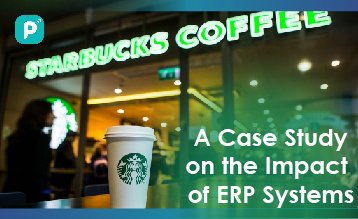
With over 32,000 stores spanning 83 global markets, Starbucks has cemented itself as the premier roaster, retailer and marketer of specialty coffee worldwide. But what many customers don’t realize is the enormous operational complexity behind delivering consistent, quality products and service across thousands of locations.

Starbucks struggled with fragmented systems and processes before embarking on an ambitious ERP implementation in 2008. Let us delve into this case study to understand this better!
Life Before ERP: Disconnected Systems, Inconsistent Processes
In Starbucks’ early days, they relied on limited point-of-sale and financial systems patched together for their handful of stores. However, hyper-growth took priority over operational integration. With thousands of new locations opening globally, Starbucks’ systems became increasingly fragmented:

POS, inventory, procurement, finance, HR, and warehouse management systems were siloed and disjointed:
- No unified data source or version of truth across the enterprise
- Processes were ad-hoc across geographies, with no standardization
- The supply chain was plagued by manual inventory management and inaccuracy
- Forecasting, reporting, and insights were challenged by fragmented data
- This complex web of systems caused significant pain points:
- Supply Chain Inefficiencies:
- Lack of inventory visibility resulting in waste and shortages
- Difficulty forecasting demand and managing suppliers
- Distribution and logistics bottlenecks
Operational Chaos:
- Inconsistent procedures across stores and markets
- Difficulty training employees and maintaining brand standards
- No unified view of performance metrics
Constrained Growth:
- Hard to expand into new markets and add stores rapidly
- Challenging to integrate acquisitions
- IT complexity and costs spiraling out of control
Reduced Profits:
- Increasing overheads eating into margins
- Limited financial visibility to identify cost issues
- Declining same-store sales growth
Facing slowing revenue and eroding margins, Starbucks knew it needed an operational overhaul. Integrating its business processes through ERP would provide the visibility, efficiency, and flexibility to restart growth.
Brewing a Bold ERP Initiative
In 2008, Starbucks announced a bold initiative to implement SAP ERP across their enterprise. With CEO Howard Schultz at the helm, they committed $250-300 million over 2.5 years to deploy a comprehensive solution integrating:

- Finance and Accounting
- Supply chain and inventory
- Procurement
- Warehouse management
- Production planning
- Quality control
- Sales order processing
- Business intelligence and analytics
- Human capital management
- Master data management
The complex project scope encompassed redesigning processes, rolling out to over 11,000 stores, and change management across 200,000+ employees.
Key Strategies for Success
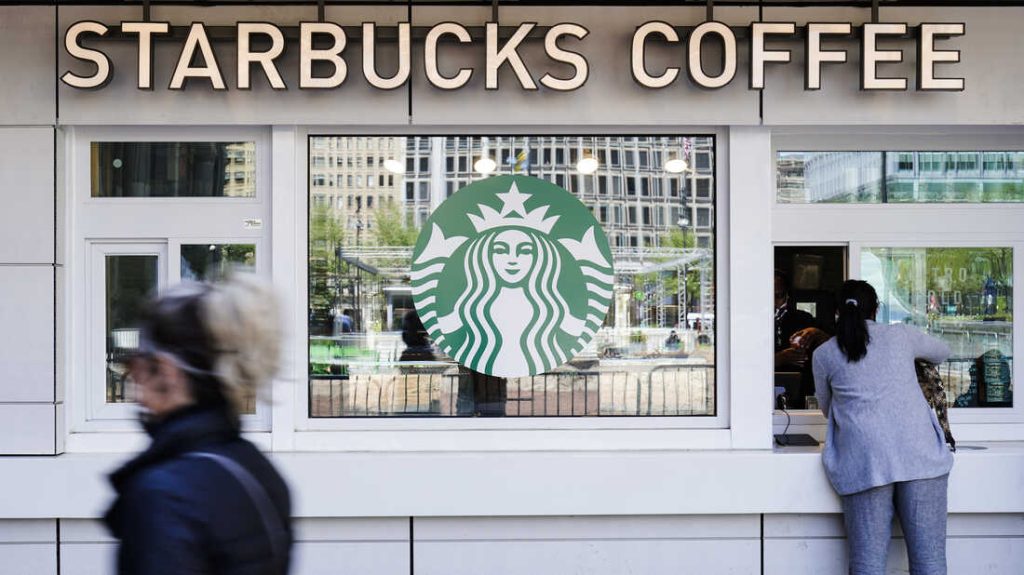
- A phased approach focusing first on Canadian and US stores
- Close IT and business collaboration throughout
- Customized training programs across the organization
- Pilot testing and iterative refinements before global rollout
- Ongoing enhancements even post-implementation
With careful planning and commitment from leadership down, Starbucks saw their multi-year ERP investment bear fruit.
The Transformational Business Impacts of ERP
While costly and requiring significant change management, Starbucks reaped tremendous benefits from unified ERP:
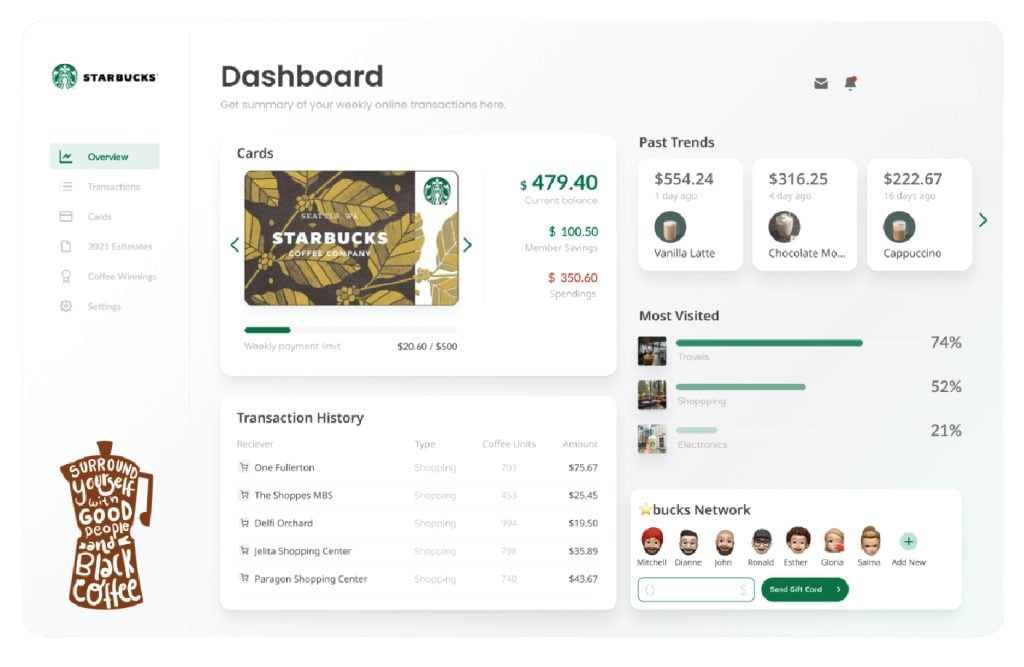
- Complete Visibility into Operations
- ERP delivered detailed visibility across procurement, inventory, logistics, sales, costs, and profitability across geographies. This guided better decision-making.
- Supply Chain Optimization
- Inventory accuracy rose from 60-70% to over 95% through real-time ERP tracking. Waste declined and profitability improved.
- Speed and Agility
- Automation of everything from ordering to new store opening accelerated Starbucks’ responsiveness to market demands.
- Enhanced Customer Experience
A 360-degree customer view enabled personalized marketing and promotions as well as omni-channel conveniences like mobile ordering.
Foundation for Innovation
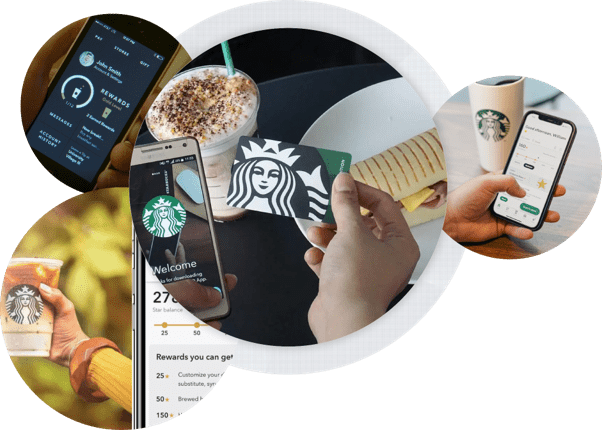
With a modern integrated platform, Starbucks could rapidly launch new initiatives from loyalty programs to AI-enabled mobile features.
Cost Control and Financial Discipline
Automation and integration drove efficiency. Granular cost analytics also improved expense management and controls.
Business Results
Beyond benefits like $30 million saved annually in IT costs, Starbucks credits ERP for supporting tremendous business growth since 2008:
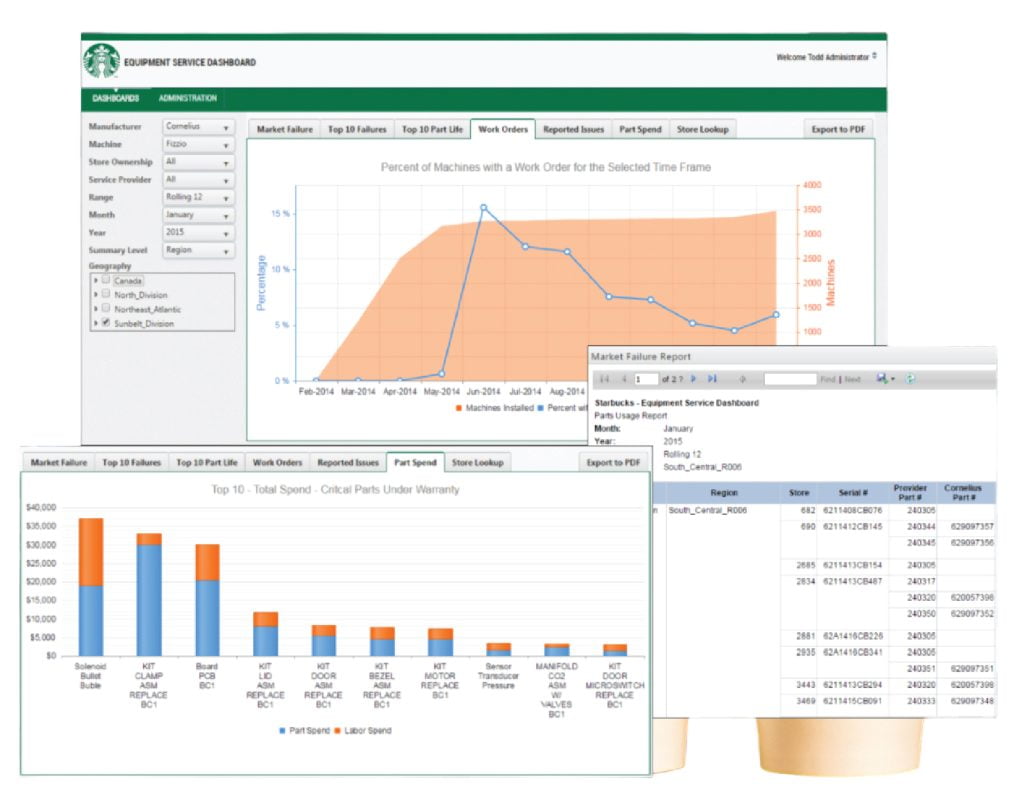
- 25% increased earnings in 2011 post-ERP implementation
- 60% revenue growth from 2011-2019 with over 10,000 new store openings
- Expansion into 5 new international markets
- Consistent innovation in products and customer experience
- Stock price growth from $9 in ’08 to $90 in ’22
The Proof is in the Pumpkin Spice Latte
Starbucks’ ERP journey illustrates how aged systems and “duct tape” processes hindered even this iconic brand. But with visionary leadership, robust project management, and employee change management, they transformed into an operationally excellent business. The numbers speak for themselves – normalized earnings growth, global expansion, and a stock price nearly 10X higher.
Starbucks is now positioned to continue innovating and exciting customers worldwide. So next time you sip a pumpkin-spiced latte, take a moment to recognize the enterprise-wide coordination and efficiency that delivered it!
Like any complex IT project, Starbucks’ ERP implementation was not without challenges. But the rewards have been tremendous – streamlined operations, global consistency, cost reductions, and business growth. For any enterprise struggling with fragmented systems and inconsistent processes, Starbucks provides an inspiring case study of how reengineering technology and processes hand-in-hand can enable innovation and competitive advantage.
With ERP now firmly brewed into their operations, Starbucks is positioned to continue excelling on all fronts – from supply chain to sustainability, and global customer experience to profitability.
Explore our website to discover personalized ERP solutions for your organization. Gain a detailed understanding of how our services can assist you in achieving effective management solutions and more.
Request a FREE Proposal Now!
By submitting this form, I agree that the Terms of Service and Privacy Policy .

Recent Posts
How red label’s ppc campaign skyrocketed sales – a case study.
Apr 24, 2024
Brooke bond Red Label, a largest-selling tea brand, embarked on a...
Unveiling the Secrets: How Airbnb Mastered the Art of Driving Organic Traffic Through Blogging
Apr 23, 2024
Driving organic traffic to websites is crucial for businesses to...
Cereal Success: How Email Pop-ups Catapulted Kellogg’s Marketing Win
Mar 20, 2024
Kellogg's, a household name in the breakfast cereal industry, has...
From Old to Bold: How Old Spice’s PPC Campaign Redefined Branding Success
Mar 19, 2024
Old Spice, a prominent brand in the world of men's grooming...
Related Blogs

Mobile ERP Solutions: Enabling Remote Work and Accessibility
The rapid pace of digital transformation has led to seismic shifts across...

Future-Proofing Your Business: How a Scalable ERP Enables Adaptability
In today’s era of rapid technology change and business uncertainty,...

Ensuring Data Security in ERP Systems: Best Practices and Compliance Measures
Enterprise Resource Planning (ERP) systems have become the digital backbone...
- Sharing Economy: Technology trends – Yahoo Finance
- Launch of the Strategic Partners’ Initiative for Data and Digital Health – World Health Organization (WHO)
- Cybersecurity – EY
- Accenture Technology Vision 2024: “Human by Design” Technologies Will Reinvent Industries and Redefine Leaders by Supercharging Productivity and Creativity – Newsroom | Accenture
- Artificial Intelligence – University of Illinois Urbana-Champaign

Case Study: Starbucks’ Success Elevating Customer Experience with Customer Journey Mapping
Customers journey mapping to deliver great customers experiences.

Starbucks, the world-renowned coffee company, is known for its exceptional customer experience and innovative offerings. To stay ahead in the competitive coffee industry and maintain its reputation, Starbucks has consistently prioritized understanding its customers and their needs. One key strategy that Starbucks has used to achieve this is customer journey mapping.
Customer Journey Mapping Strategy
Starbucks embarked on a comprehensive customer journey mapping initiative, aiming to identify pain points in its customers’ experiences and develop solutions to address these issues. The company engaged in a cross-functional approach, involving teams from various departments such as marketing, store operations, and product development, to ensure a holistic understanding of the customer journey.
Understanding the Customer Journey

Starbucks conducted extensive research to gain insights into its customers’ interactions with the brand, both online and offline. The company collected data through customer interviews, surveys, and observations, as well as leveraging digital analytics and transactional data. This information was used to create detailed customer journey maps, highlighting key touchpoints, emotional states, and pain points.
Identifying Pain Points and Opportunities
The customer journey maps revealed several areas where Starbucks could improve its customer experience. Some notable pain points included long wait times, inconsistent product quality, and challenges in navigating the rewards program. The company also identified opportunities to enhance the in-store experience, such as incorporating digital technologies and personalizing customer interactions.
Developing a Customer Experience Roadmap
Armed with these insights, Starbucks developed a customer experience roadmap that outlined the strategic initiatives and improvements needed to address the identified pain points and capitalize on opportunities. Some of the successful implementations based on the roadmap include:
- Mobile Order & Pay: To reduce wait times and streamline the ordering process, Starbucks introduced the Mobile Order & Pay feature in its app. This allowed customers to place orders in advance and pick up their drinks without waiting in line, significantly enhancing the overall customer experience.
- Personalized Rewards: Starbucks revamped its rewards program to make it more accessible and user-friendly, tailoring offers and promotions based on customers’ preferences and purchasing habits. This personalized approach encouraged customer loyalty and increased engagement with the brand.
- Consistent Quality Standards: Starbucks invested in employee training and quality control measures to ensure consistent product quality across all locations. This focus on excellence helped reinforce the brand’s reputation for offering high-quality coffee and beverages.
- Digital Integration: Starbucks introduced digital touchpoints in its stores, such as interactive menu boards and mobile payment options, to create a seamless and engaging customer experience. These innovations helped bridge the gap between the online and offline customer journey.

The company’s attention to the entire journey has been a key factor in the development of the premium coffee category.
According to PeopleMetrics, Starbucks has been able to simplify and operationalize Customer Journey Mapping which has helped them unlock the intersection of convenience and connection by introducing enhancements to the customer experience across retail and digital that meet customers wherever they are, expanding the Third Place experience beyond the physical store.
Initiatives that have been uncovered through journey mapping exercises:
Starbucks is investing in its partners, creating personalized experiences for customers, and innovating its digital and retail strategy.
Investing in Partner Success
Starbucks is placing its partners at the core of its Reinvention plan. The company believes that investing in its partner base is key to delivering high-quality customer experiences, uplifting brand affinity and customer loyalty, and increasing value back to partners through wages, benefits, programming, and tools for continued personal growth. In fiscal 2023, Starbucks has identified a number of near-term solutions that will be implemented to ensure a thriving partner experience:
How to Improve Customer Experience
Wage and Recognition Innovation:
Starbucks is helping partners by giving them the hours they need, expanding digital tipping, and incorporating other opportunities to increase overall pay. The company is committed to paying partners competitively and has raised its starting wage in the U.S. to $15 per hour.
New Well-being Benefits:
Starbucks is offering enhanced sick pay, new savings and student loan management benefits, and additional mental health support to its partners.
Personalized Career Mobility:
Starbucks is introducing a new partner app and the development of personalized career paths to enable its partners to achieve their career goals.
Investments in Store Managers:
Starbucks is providing new leadership trainings, reinventing scheduling and decision-making tools, and creating career journey mapping to improve store manager retention and empower them to focus on core functions of the job that increase satisfaction and overall performance of their store partners.
These investments are aimed at empowering Starbucks partners to thrive at work, thrive as individuals, and thrive together. Stores managed by partners with over three years of tenure have 13% greater weekly sales and higher customer satisfaction, making it clear that investing in partner success is a win-win for both partners and the company.
Creating Personalized Experiences for Customers
Starbucks is committed to unlocking the intersection of convenience and connection by introducing enhancements to the customer experience across retail and digital that meet customers wherever they are, expanding the Third Place experience beyond the physical store. The company is investing in purpose-built store concepts, delivering beverage innovation, and expanding effortless digital convenience to create personalized experiences for its customers.
Investing in Purpose-built Store Concepts:
Starbucks is reimagining the store environment by introducing purpose-built store concepts that meet customers wherever and whenever they want and improve the partner experience. The company is investing an incremental $450M in the existing U.S. store base in fiscal year 2023 with continued investment in fiscal 2024 and 2025. Starbucks expects these investments will create efficiencies, unlock capacity for partners, and enable increased throughput to support increasing customer demand.
Digital and Physical Customer Journey Optimization
Delivering Beverage Innovation:
To improve partner and customer experiences, Starbucks has developed the Siren System, a proprietary new equipment innovation designed to meet the growing demand for customization of hot and cold beverages and warm foods. As part of the Siren System, Starbucks has redesigned its cold beverage station, which significantly reduces the time and number of steps to make cold beverages, unlocking productivity gains and ultimately freeing up time for partners to connect with customers.
In addition, Starbucks is developing a new way of extracting cold coffee and espresso with the Cold Pressed Cold Brew system. This new, proprietary technology delivers cold press coffee in a matter of seconds and in fewer than four steps, a step-change improvement when compared to today’s cold brew which is steeped for 20 hours and takes more than 20 steps to make. The Cold Pressed Cold Brew will begin testing in stores in fiscal 2023.
Expanding effortless digital convenience
Starbucks’ Reinvention Plan aims to create a seamless and personalized experience for customers, making it easier for them to get their favorite Starbucks beverage when and where they want. The company has recognized the increasing importance of digital convenience in providing a better customer experience. The COVID-19 pandemic has also highlighted the need for contactless ordering and payment options. Starbucks has responded by investing in and expanding its digital offerings, such as its mobile ordering platform, Starbucks Rewards program, and Starbucks Delivers.
Growing Starbucks Delivers program with DoorDash and UberEats
One of Starbucks’ major initiatives for expanding digital convenience is growing its Starbucks Delivers program. The company has partnered with DoorDash to expand the program to a national scale alongside UberEats in fiscal 2023. This partnership aims to improve delivery efficiency, expand delivery areas, and offer more delivery options to customers. Starbucks Delivers is expected to be available in over 10,000 stores across the United States by the end of 2022.
Increase Customer Satisfaction with a Digital Customer Experience Platform
Starbucks Rewards program with Starbucks Odyssey
Starbucks is also evolving its Starbucks Rewards program with Starbucks Odyssey, a Web3-enabled experience that will bridge the physical and digital customer experience. Starbucks Odyssey aims to unlock a new generation of experiential benefits for customers. Through Starbucks Odyssey, customers will be able to earn and redeem rewards, access exclusive content, and become part of a digital community built on human connection. Starbucks plans to roll out Starbucks Odyssey to all customers in the United States and Canada by the end of 2022.
The CDO TIMES Bottom Line
Starbucks’ successful application of customer journey mapping demonstrates the value of understanding customers’ experiences for customers, partners and employees and using these insights to drive improvements and innovation. By identifying pain points and opportunities in the customer journey, Starbucks was able to develop a customer experience roadmap that addressed these issues and reinforced its position as a leader in the coffee industry.
Love this article? Embrace the full potential and become an esteemed full access member, experiencing the exhilaration of unlimited access to captivating articles, exclusive non-public content, empowering hands-on guides, and transformative training material. Unleash your true potential today!
Subscribe on LinkedIn : Digital Insider
Become a paid subscriber for unlimited access, exclusive content, no ads: CDO TIMES
In this context, the expertise of CDO TIMES becomes indispensable for organizations striving to stay ahead in the digital transformation journey. Here are some compelling reasons to engage their experts:
- Deep Expertise : CDO TIMES has a team of experts with deep expertise in the field of Digital, Data and AI and its integration into business processes. This knowledge ensures that your organization can leverage digital and AI in the most optimal and innovative ways.
- Strategic Insight : Not only can the CDO TIMES team help develop a Digital & AI strategy, but they can also provide insights into how this strategy fits into your overall business model and objectives. They understand that every business is unique, and so should be its Digital & AI strategy.
- Future-Proofing : With CDO TIMES, organizations can ensure they are future-proofed against rapid technological changes. Their experts stay abreast of the latest AI advancements and can guide your organization to adapt and evolve as the technology does.
- Risk Management : Implementing a Digital & AI strategy is not without its risks. The CDO TIMES can help identify potential pitfalls and develop mitigation strategies, helping you avoid costly mistakes and ensuring a smooth transition.
- Competitive Advantage : Finally, by hiring CDO TIMES experts, you are investing in a competitive advantage. Their expertise can help you speed up your innovation processes, bring products to market faster, and stay ahead of your competitors.
By employing the expertise of CDO TIMES, organizations can navigate the complexities of digital innovation with greater confidence and foresight, setting themselves up for success in the rapidly evolving digital economy. The future is digital, and with CDO TIMES, you’ll be well-equipped to lead in this new frontier.
Do you need help with your digital transformation initiatives? We provide fractional CAIO, CDO, CISO and CIO services, do a Tech Navigator Assessment and we will help you drive results and deliver winning digital and AI strategies for you! Schedule your FREE Tech Navigator Call NOW:
Subscribe now for free and never miss out on digital insights delivered right to your inbox!
Type your email…
Share this:
- The AI Revolution – Chapter 2: Unlock the Power of AI
- The Robotic Revolution: AI and Automation Reshaping the Restaurant and Hospitality Industry
Carsten Krause
I am Carsten Krause, CDO, founder and the driving force behind The CDO TIMES, a premier digital magazine for C-level executives. With a rich background in AI strategy, digital transformation, and cyber security, I bring unparalleled insights and innovative solutions to the forefront. My expertise in data strategy and executive leadership, combined with a commitment to authenticity and continuous learning, positions me as a thought leader dedicated to empowering organizations and individuals to navigate the complexities of the digital age with confidence and agility. The CDO TIMES publishing, events and consulting team also assesses and transforms organizations with actionable roadmaps delivering top line and bottom line improvements. With CDO TIMES consulting, events and learning solutions you can stay future proof leveraging technology thought leadership and executive leadership insights. Contact us at: [email protected] to get in touch.
2 thoughts on “ Case Study: Starbucks’ Success Elevating Customer Experience with Customer Journey Mapping ”
Pingback: The Power of Email Marketing KPIs for Food and Beverage Brands
Pingback: A Guide to Customer Journey Analytics in 2024 and Leveraging Predictive Analytics for Enhanced Customer Insights - 360head digital marketing agency
Leave a Reply Cancel reply
Discover more from the cdo times.
Subscribe now to keep reading and get access to the full archive.
Continue reading
You must be logged in to post a comment.
Decoding The Starbucks Marketing Strategy: A Complete Guide
By Aditya Shastri
Quick Read Discover how Starbucks has perfected its marketing strategy to dominate the coffee industry. This Starbucks case study delves into its innovative marketing techniques, digital strategy, and recent campaigns, showcasing why it remains a market leader.
Learn From Asia’s #1 Digital Marketing Institute
AI-Based Curriculum
Dive in to the future with the latest AI tools
Placement at top brands and agencies

Talk to counsellor
About Starbucks
Established in 1971 in Seattle, Washington, Starbucks began as a lone storefront specializing in premium coffee beans and equipment. It has grown into a global coffeehouse chain with over 30,000 locations worldwide. The company’s mission is to uplift and nourish the human spirit—one individual, one cup of coffee, and one community at a time. Known for its commitment to sustainability and ethical sourcing, Starbucks is a pioneer in creating a unique coffee culture.

Source: Google
Relevant Updated Statistics
- As of 2023, Starbucks operates in over 80 countries with 33,833 stores globally【source: Statista】
- Starbucks’ revenue for 2022 reached $29.06 billion, a 24% increase from the previous year【source: Starbucks Annual Report 2022】
- The brand’s loyalty program, Starbucks Rewards, has over 24.8 million active members in the United States【source: Starbucks Investor Relations】.
What’s New With Starbucks
Business news.
Starbucks announced plans to open 1,000 new stores in China by 2025, strengthening its presence in one of its fastest-growing markets.
Product Launch
In 2023, Starbucks introduced the Oleato range, featuring coffee infused with olive oil, a bold new addition to their beverage lineup.
Marketing News
Have you ever been called the wrong name? It might seem like a minor detail, but for transgender and non-binary individuals, it can be a daily experience. Starbucks recognized this in their powerful campaign, “Every Name’s a Story.” This campaign wasn’t just about selling coffee – it was about celebrating inclusivity and diversity.
Celebrity News
In collaboration with singer Taylor Swift, Starbucks promoted the ‘Red (Taylor’s Version)’ album by featuring her favourite drink, the Caramel Nonfat Latte, in stores worldwide.
Are you ready to unlock your full potential in the thrilling world of digital marketing? Our PG program is just what you need. Enrol in our Post-Graduation in Digital Marketing and explore the opportunities now.
But for now, let us continue with our case study on the marketing strategy of Starbucks.
Starbucks Target Market
Starbucks, a premium coffee brand, strategically positions itself in the market with a keen focus on high-income spenders and health-conscious professionals. The market positioning of Starbucks is evident in its appeal to urban, on-the-go consumers seeking quality coffee and a tranquil environment to unwind.
This market positioning of Starbucks attracts a diverse clientele, including technology early adopters and those flexible to change, primarily aged 25-45. Starbucks’ success is built on a deep understanding of its target audience.
This allows them to constantly adapt their offerings and marketing strategies to meet evolving consumer trends and preferences. This case study will explore how Starbucks uses this knowledge to stay ahead of the curve.
This approach underscores Starbucks’ commitment to reaching beyond the storefront, offering not just coffee but an experience tailored to its discerning clientele.So summed up, their target audience is-
- High-income spenders
- Technology early adopters
- Health-conscious professionals
- Flexible to change
- Reaching beyond the storefront (Online Sales & Engagement)
Also Read: Digital Marketing Courses in Mumbai
🚨 FREE MASTERCLASS
Building a Profitable Instagram Strategy
Worked with:

Register for Free
IG Content Creater With 10+ million views

Register for free
Buyer Persona
To provide a clearer understanding of Starbucks’ target audience, refer to the Buyer Persona outlined in our Starbucks case study blog.

Buyer’s Persona
Profession:
Web-Developer
- Seeking a premium coffee experience
- Interested in sustainable and ethically sourced products
- Value convenience and loyalty rewards
Interest & Hobbies
- Enjoying quality time at coffee shops
- Passionate about environmental causes
- Engaged in social media and digital trends
Pain Points
- High prices compared to local coffee shops
- Limited seating in busy locations
- Preference for non-dairy or alternative milk options
Social Media Presence
Starbucks in india.
In the 2010s, Starbucks’ marketing strategy focused on entering the Indian market to capitalize on the ever-growing coffee culture, particularly targeting the niche upper-class segment. Despite an initial announcement in 2007, Starbucks withdrew its plans without explanation, finally making a grand entry in 2011. To establish a strong foothold, the world’s biggest bistro chain forged a 50-50 joint venture with Asia’s largest coffee grower, Tata Consumer Products Limited, for their Starbucks coffee marketing strategy.
Successfully launching its brand, Starbucks’ next critical move was to meticulously define and engage its target audience in India, ensuring sustainable growth and market presence. This strategic approach, outlined in this Starbucks case study, highlights its methodical entry into the Indian market and the partnership that facilitated its successful establishment in the region.
Now, without further ado, let’s get straight into Starbucks’s marketing tactics, exploring their strategic approaches and methods in the market.
Marketing Strategies of Starbucks
Initially, Starbucks’s marketing tactics in India focused on segmenting consumer markets on a socio-economic basis, targeting working professionals seeking a soothing workspace. They strategically placed stores in locations where this demographic was prevalent.
Like many companies entering new markets, Starbucks started with a single segment and expanded upon achieving initial success. Over time, they diversified their target audience to include teenagers and young adults, bolstering their Starbucks coffee marketing strategy through product range expansion and enhanced social media presence.
The market positioning of Starbucks hinges on delivering a unique, differentiated experience that solidifies its reputation as a highly esteemed brand. Their marketing mix integrates digital technology and social media extensively, engaging the modern, tech-savvy generation for promotions and customer interaction.
This approach has not only fortified their brand identity but also fostered a deep connection with their diverse customer base.
Note: To enhance your expertise, you can explore various courses on digital marketing online that provide in-depth knowledge and the latest industry trends.
Digital Expansion
One of the key priorities of Starbucks’s marketing strategy is expanding its digital interactions with customers. To achieve this goal, it implements several strategies to attract digitally registered customers beyond the rewards program. For example, the coffee chain is offering mobile order services and leveraging Wi-Fi sign-ins at its physical stores.
Starbucks Social Media Strategy
Most people are familiar with Starbucks on social media. The company features several social media accounts that are known for their distinctive branding, interactive posts, and visually pleasing content. The diverse range of content includes recipes, photography, articles, and features. But there’s more than meets the eye. The stream of content can be broken down into a series of campaigns geared at creating a greater sense of Starbucks marketing techniques, enhancing brand awareness, and fostering a sense of community.
Starbucks Product-based Marketing Campaigns
The company focuses on promoting unique and fan-favourite beverages as part of its Starbucks coffee marketing strategy. The brand understands the popularity of its flagship items, particularly the Pumpkin Spiced Latte and Frappuccino, and recognises the demand for this type of content among its audience.
They have even established dedicated social media accounts for these customer favourites, where they actively share relevant and relatable memes to engage their loyal fan base. Additionally, Starbucks leverages user-generated content (UGC), often featuring consumer images of visually appealing products like the Unicorn Frappuccino.

These images are not only reshared across official channels but also incorporated into influencer campaigns, further amplifying their digital marketing efforts.
Starbucks Corporate Social Responsibility-based campaign
Starbucks’ marketing tactics involve leveraging social change as a tool, positioning itself as open-minded and inclusive. One notable example is the #ExtraShotOfPride campaign, which actively supports the LGBT+ community.
Community-based campaigns

#RedCupArt campaign
Another facet of Starbucks’s marketing strategy is its emphasis on highlighting individuals and communities. Take a look at the #RedCupArt campaign, which not only increases engagement but also provides them with a library of UGC content. They use storytelling to showcase acts of courage and kindness in American communities, localizing the content.
Starbucks’s marketing techniques consciously humanize the company by sharing stories on their account, spotlighting employees who play an essential role, especially when consumers are distrustful of big brands.
Just like Starbucks coffeehouses fostered a sense of community in person, their online coffee content creates a similar social experience. This reflects their pioneering role in shaping modern coffee culture.
Festive Marketing
Starbucks has also initiated a new seasonal whole-bean coffee, #StarbucksDiwaliBlend, for its consumers across the country and select global markets. The latest exquisite blend is hand-picked and sourced from Tata Estates in Karnataka and Tamil Nadu.
The Starbucks Diwali Blend was intended as a tribute to the region’s rich and cultural coffee heritage and expertise. They launched the #SketchTheBlend campaign where customers have to share their creativity on the Diwali Blend cup and sleeve and could win 5 free beverages.
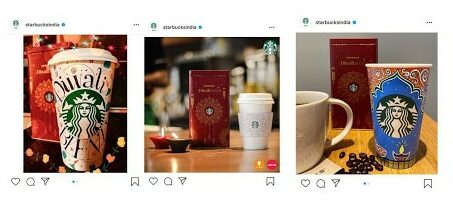
Now that you understand the various strategies that comprehensively contribute to their top-notch Starbucks coffee marketing strategy. Let’s dive deeper and analyse their overall digital presence.
Digital Marketing Strategies
Seo (search engine optimization) strategy:.
Starbucks’s marketing tactics involve optimising its online presence by incorporating relevant keywords, high-quality content, and a user-friendly website to improve search engine rankings.
Social Media Marketing Strategy:
Starbuck’s marketing strategy includes actively engaging with customers on social media platforms, by running targeted ads and interactive content to boost engagement. The brand actively engages with customers on social media platforms, running targeted ads and interactive content to boost engagement.
E-commerce Strategy:
Starbucks’ online store offers a seamless shopping experience, from purchasing coffee beans and equipment to ordering ready-to-drink products.
Mobile App:
The Starbucks mobile app enhances customer convenience with features like mobile ordering, payment, and rewards tracking, showcasing a key aspect of Starbucks’s coffee marketing strategy.
Influencer Marketing Strategy:
Collaborating with influencers and celebrities, Starbucks effectively reaches a broader audience and creates buzz around new product launches and campaigns.
Bonus: Enrolling in a digital marketing course can provide you with the essential skills and knowledge to understand and implement successful strategies, much like those employed by Starbucks.
Starbucks knows its audience is technologically advanced, which makes it imperative for them to have a strong digital marketing strategy. It’s clear how Starbucks prefers marketing on platforms where they have two-way communication instead of platforms like print and television which is more of a one-way communication.
Marketing and Advertising Campaigns
One of Starbucks’ most famous campaigns is “Meet Me at Starbucks,” a global initiative that highlights the diverse ways people connect at their stores. The campaign emphasized the brand’s mission to foster human connection and resulted in increased customer engagement and brand loyalty.
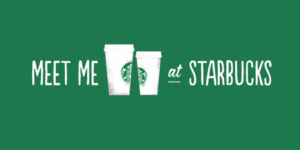
Starbucks launched its social media campaign in 2 phases. The first phase was where they asked their customers to share their ways of reconnecting amidst the pandemic and share their favourite Starbucks memories on their personal Instagram handles with the hashtag Starbucks advertising strategy. In the second phase- ‘Half Cup Full’- they asked their customers to comment on their favourite beverage on the post. They then sent these customers voice notes of baristas hollering the customers’ names along with their favourite beverage to remind them of the famous in-store experience.
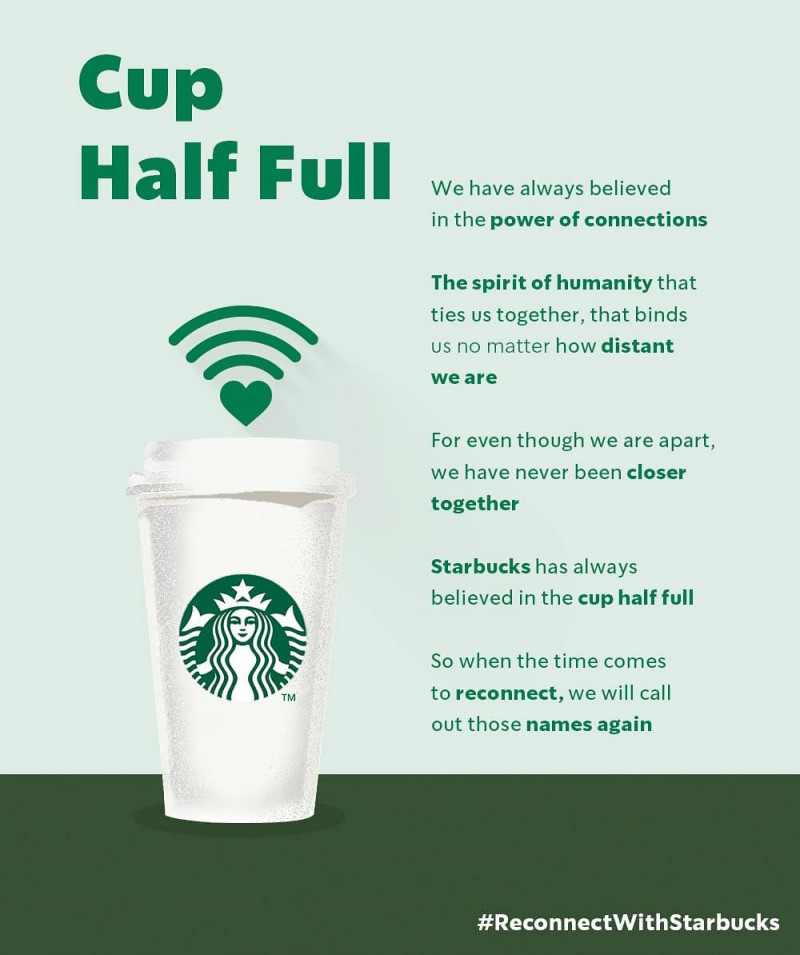
This was a great campaign as it not only reminded the people of all the good memories with Starbucks but also made them feel important and valued.
Campaign Analysis:
Starbucks employs a variety of marketing techniques to maintain its market positioning. These include personalised marketing through their rewards program, located store experiences, and a focus on sustainability. Their recent ‘Every Name’s a Story’ campaign is an excellent example of leveraging social issues to build brand loyalty.
Read more about: For skill enhancement, explore our digital marketing courses in ahmedabad and digital marketing courses in south delhi , created to suit your requirements.
Failed Campaigns
#racetogether campaign.
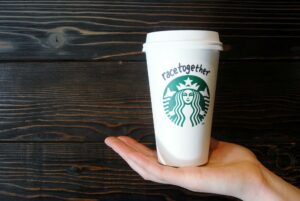
The campaign aimed to spark conversations about race by having baristas write “Race Together” on cups, which was met with widespread criticism.
Customers and employees felt uncomfortable and questioned the appropriateness of discussing such a sensitive topic in a coffee shop setting.
Starbucks quickly scaled back the campaign, focusing instead on internal initiatives to promote diversity and inclusion.
Top Competitors
In this Starbucks case study, we will explore its competitors and how Starbucks consistently rises above them, showcasing its resilient Starbucks marketing strategy.
Dunkin’ Donuts
Renowned for its extensive range of coffee blends and delectable baked goods, Dunkin’ Donuts has established itself as a favourite among coffee enthusiasts and snack lovers alike.
McDonald’s coffeehouse brand offers a budget-friendly assortment of coffee beverages, providing customers with a convenient and affordable coffee experience alongside their meals.
Costa Coffee
A prominent British coffeehouse chain, Costa Coffee is celebrated for its European presence and commitment to delivering quality coffee in a cosy café atmosphere.
Peet’s Coffee
Known for its artisanal approach to coffee roasting, Peet’s Coffee specialises in high-quality, hand-roasted beans that cater to discerning coffee connoisseurs seeking exceptional flavour profiles.
Tim Hortons
A beloved Canadian institution, Tim Hortons is cherished for its signature coffee blends and freshly baked doughnuts, offering a comforting taste of Canadian hospitality to customers nationwide.
Be it Starbucks or any other company, competition is everywhere. So if you are someone who likes doing research on competitor analysis for other companies, let me help you out. Check out these case studies on the marketing strategy of Jollibee , McDonald’s marketing strategy and the marketing strategy of Dunkin Donuts .
In conclusion, Starbucks’ marketing strategy is a testament to its success in the coffee industry. By focusing on high-income spenders, urban professionals, and tech-savvy individuals, Starbucks has effectively positioned itself as a premium brand.
Their innovative campaigns, such as ‘Every Name’s a Story’ and ‘Meet Me at Starbucks,’ highlight their commitment to inclusivity and human connection. The integration of digital strategies, social media engagement, and a robust rewards program further strengthens their market presence.
By continuously adapting to consumer trends and leveraging strategic partnerships, Starbucks remains a leader in the global coffee market.
Additional Information
Want to learn the essentials of digital marketing in no time? Our extensive Online Digital Marketing Course will help you unlock success in this evolving industry.If you have reservations about enrolling, try our Free Digital Marketing Masterclass first! Get a preview of the content and decide if it’s a good match for you.
Alternatively, if you’re interested in the world of social media, our Free Instagram Marketing Course might be the perfect fit.
Lastly, if you enjoyed this blog, we recommend exploring our digital marketing case studies. We’ve covered some of the best companies out there. A few the examples are marketing strategy of Amazon , the marketing strategy of Red Bull and the marketing strategy of LinkedIn .
Don’t forget to check out our digital marketing blogs as well. You might find your perfect course among them!
We appreciate you reading this blog. Comment down below if you want more such case studies.
Frequently Asked Questions- Marketing Strategy Of Starbucks
Starbucks' mission is to inspire and nurture the human spirit – one person, one cup, and one neighbourhood at a time.
Starbucks operates over 32,000 stores worldwide, making it one of the largest coffeehouse chains globally, known for its extensive global presence and accessibility.
Starbucks' latest product launch includes a range of summer-inspired beverages like the Iced Guava Passionfruit Drink and the Nitro Cold Brew with Salted Honey Cold Foam.
Starbucks' main competitors include Dunkin' Donuts, McCafé (McDonald's coffeehouse brand), Costa Coffee, Peet's Coffee, and Tim Hortons, each vying for market share in the coffee and quick-service restaurant industries.
The Starbucks Rewards program is a loyalty program where customers earn points (stars) for purchases, which can be redeemed for free drinks and food items, along with personalised offers and early access to new products.
Through initiatives like ethically sourced coffee, reducing waste, and promoting recycling.
The 'Race Together' campaign was an initiative by Starbucks aimed at sparking conversations about race relations. It encouraged employees to write ‘Race Together’ on cups to prompt dialogue among customers and staff.
Starbucks' digital marketing strategy leverages social media platforms and mobile apps to engage customers with personalised offers, loyalty programs, and interactive content, enhancing brand visibility and customer experience.
Starbucks' target audience is motivated by quality coffee, a cosy ambience, and a sense of community fostered by the brand's commitment to social responsibility and customer-centric experiences.
Starbucks leverages social media to engage customers through creative campaigns, customer interactions, and promotions, enhancing brand visibility and fostering a sense of community among coffee enthusiasts worldwide.

Author's Note: My name is Aditya Shastri and I have written this case study with the help of my students from IIDE's online digital marketing courses in India . Practical assignments, case studies & simulations helped the students from this course present this analysis. Building on this practical approach, we are now introducing a new dimension for our online digital marketing course learners - the Campus Immersion Experience. If you found this case study helpful, please feel free to leave a comment below.
IIDE Course Recommendation

" * " indicates required fields
Get Syllabus
By providing your contact details, you agree to our Terms of Use & Privacy Policy
Aditya Shastri
Lead Trainer & Head of Learning & Development at IIDE
Leads the Learning & Development segment at IIDE. He is a Content Marketing Expert and has trained 6000+ students and working professionals on various topics of Digital Marketing. He has been a guest speaker at prominent colleges in India including IIMs...... [Read full bio]
Clicking on the image of the Starbucks cup is my thing too. This blog provides great and deep insights into their strategy.
Starbucks marketing strategy brewed! served! and I’m here for it!
Submit a Comment Cancel reply
Your email address will not be published. Required fields are marked *
Submit Comment
This site uses Akismet to reduce spam. Learn how your comment data is processed .
Related Posts
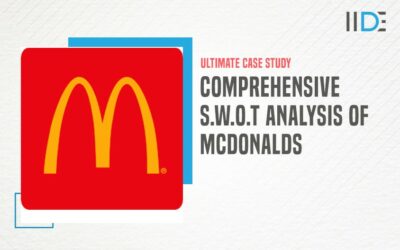
Comprehensive S.W.O.T Analysis of McDonalds
by Aditya Shastri | Aug 9, 2024
Quick Read The SWOT analysis of McDonald's provides a deep understanding of the company’s...
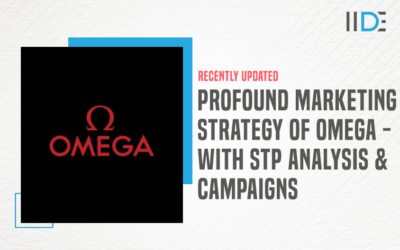
Profound Marketing Strategy of Omega – With STP Analysis & Campaigns
by Aditya Shastri | Aug 5, 2024
Quick Read The marketing strategy of Omega blends traditional craftsmanship with innovative...
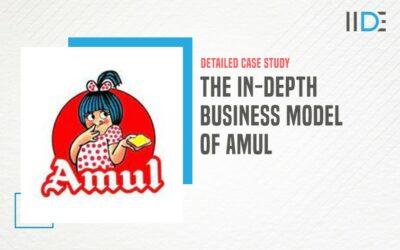
In-depth Research on the Business Model of Amul you need to know!
Quick Read The business model of Amul, renowned for its cooperative structure, has...
I’m Interested in This Masterclass

- About / Contact
- Privacy Policy
- Alphabetical List of Companies
- Business Analysis Topics
Starbucks Operations Management, 10 Decision Areas & Productivity
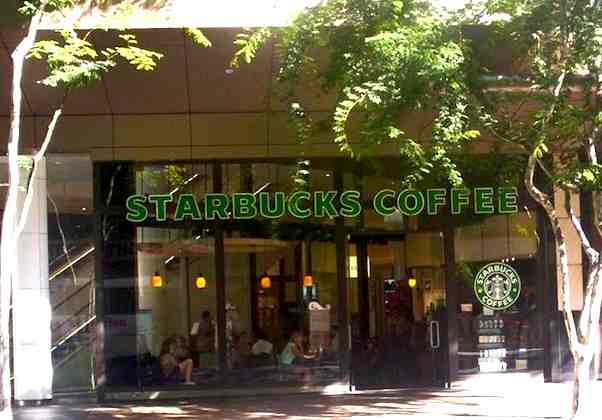
Starbucks Corporation’s operations management (OM) represents business decisions encompassing coffeehouse operations and corporate office activities. These decisions also influence the productivity and operational efficiency of franchisees and licensees. Strategic decisions in operations management direct business development toward the realization of Starbucks’ mission statement and vision statement . However, the diversity of coffee markets worldwide requires the company to apply different approaches to ensure the suitability of operations management to different business environments. Licensed and franchised Starbucks locations flexibly adjust to their local market conditions.
The 10 strategic decisions of operations management facilitate the alignment of all business areas in Starbucks’ organization. The business objectives in these decision areas implement strategies for industry leadership, such as the Coffee and Farmer Equity (C.A.F.E.) program in supply chain management. Effective operations management fortifies the strong brand image and other business strengths discussed in the SWOT analysis of Starbucks .
Starbucks’ Operations Management – 10 Critical Decisions
1. Goods and Services require decisions on the characteristics of business processes to meet the target features and quality of Starbucks products. This decision area of operations management affects other areas of the coffeehouse business. For example, the specifications of Starbucks’ roasted coffee beans establish the cost and quality limits and requirements in corresponding production operations. The coffee company’s emphasis on premium value and premium design means that production operations and productivity measures involve small margins of error to support high quality and value.
This decision area of operations management demonstrates the influence of the coffee industry environment on the company and its target consumers. Food product specifications are made to match social and economic trends, as well as the other external trends discussed in the PESTLE/PESTEL analysis of Starbucks . In addition, distribution channels affect food, beverage, and service design decisions in this area of operations management. For example, the packaging features of Starbucks instant coffees consider the logistics and inventory processes of distribution channels and retailers.
2. Quality Management ensures that business outputs satisfy Starbucks’ quality standards and the quality expectations of customers. Decisions in this area of the coffee company’s operations management aim for policies and processes that meet these standards and expectations. For example, Starbucks sources its coffee beans from farmers who comply with the company’s quality standards. The firm also prefers to buy from farmers certified under the Coffee and Farmer Equity program. Starbucks’ generic competitive strategy and intensive growth strategies are applied to use quality specifications as a selling point.
This critical decision area of operations management also accounts for customer experience in the company’s cafés and online operations. Starbucks’ strategic objective is to maintain consistent quality of service for consistent customer experience in brick-and-mortar and e-commerce environments. Premium service quality is ensured through a warm and friendly organizational culture at Starbucks coffeehouses. This service quality contributes to competitiveness against other coffeehouse firms, like Costa Coffee and Tim Hortons, as well as food-service companies that serve coffee, such as Dunkin’, McDonald’s , Wendy’s , Burger King , and Subway . Thus, Starbucks’ competitive advantage partly depends on this decision area of operations management.
3. Process and Capacity Design contributes to Starbucks’ success. The company’s operations management standardizes processes for efficiency, as observable in its cafés. Also, Starbucks optimizes capacity utilization to meet fluctuations in demand for coffee and food products. For example, processes at the company’s stores are flexible to adjust personnel to spikes in demand during peak hours. In this decision area of operations management, strategic planning at Starbucks aims to maximize productivity and cost-effectiveness through efficiency of workflows and processes.
4. Location Strategy in Starbucks’ operations management for its coffeehouses focuses on urban centers. Most of the company’s locations are in densely populated areas where demand for coffee products is typically high. In some markets, Starbucks uses strategic clustering of cafés in the same area to gain market share and drive competitors away. Strategic effectiveness in this decision area of operations management comes with a suitable marketing strategy to ensure the profitability of these cafés. Starbucks’ marketing mix or 4P helps bring customers to the company’s restaurant locations. Also, the organization of operations in these locations is supported through a suitable corporate structure. Thus, Starbucks’ organizational structure (corporate structure) reflects this location strategy.
5. Layout Design and Strategy for Starbucks cafés address workflow efficiency. The strategic decision in this area of operations management focuses on high productivity and efficiency in the movement of information and resources, including human resources, such as baristas. This layout strategy maximizes Starbucks coffeehouse space utilization with emphasis on premium customer experience, which involves higher prices for a more spacious dining (or drinking) environment. In this decision area of operations management, the company uses customer experience and premium branding to guide layout design and strategy.
6. Human Resources and Job Design have the objective of maintaining stable human resources to support Starbucks’ operational needs. At coffeehouses, the company has teams of baristas. In other parts of the organization, Starbucks has functional positions, like inventory management positions and marketing positions. This decision area of operations management considers human resource management challenges in international business, such as workforce development despite competition with other large food-service firms in the labor market. This area of operations management also integrates Starbucks’ organizational culture (corporate culture) to enhance job satisfaction, combat employee burnout, and support high productivity and operational efficiency.
7. Supply Chain Management focuses on maintaining adequate supply that matches Starbucks’ needs, while accounting for trends in the market. With this strategic objective, operations managers apply diversification in the supply chain for coffee and other ingredients and materials. Starbucks’ diverse set of suppliers ensures a stable supply of coffee beans from farmers in different countries. The company also uses its Coffee and Farmer Equity (C.A.F.E.) program to select and prioritize suppliers based on ethical practices, sustainability, and community impact. Thus, this decision area of operations management integrates ethics and Starbucks’ corporate social responsibility (CSR), ESG, and corporate citizenship into the supply chain. The Five Forces analysis of Starbucks indicates that suppliers have moderate bargaining power in the industry. Decisions in this area of operations management create a balance between the coffee company and its suppliers’ bargaining power, in order to benefit all parties involved.
8. Inventory Management is linked to Starbucks’ supply chain management. The critical decision in this area of operations management focuses on maintaining the adequate availability and movement of inventory to support the coffee company’s production requirements. At restaurants, inventory management involves manual monitoring combined with information technology to support managers and baristas. In supply and distribution hub operations, Starbucks uses automation comprehensively. Such an approach to this decision area of operations management minimizes stockout rates and guarantees adequate supply of food and beverage products and ingredients.
9. Scheduling has the objective of implementing and maintaining schedules that match market demand and Starbucks’ resources, processes, operating capacity, and productivity. In this decision area of operations management, the company applies a combination of fixed and flexible schedules for personnel at corporate offices, coffeehouses, and other facilities. Also, automation is widely used to make scheduling processes efficient and comprehensive, accounting for different market conditions affecting Starbucks locations.
10. Maintenance concerns the availability of resources and operating capacities to support the coffeehouse chain. The strategic objective in this decision area of operations management is to achieve and maintain the high reliability of Starbucks’ resources and capacities, such as for ingredient production processes. The company uses teams of employees and third-party service providers for maintaining facilities and equipment, like machines used for roasting coffee beans. Also, in this area of operations management, Starbucks maintains its human resource capacity through training programs and retention strategies. This approach satisfies the company’s workforce requirements for corporate offices and facilities and supports franchisees and licensees.
Productivity at Starbucks Coffee Company
Operations management at Starbucks uses various productivity criteria, depending on the area of operations under consideration. Some productivity metrics that are applicable to the company’s operations are as follows:
- Average order fulfillment duration (Starbucks coffeehouse productivity)
- Weight of coffee beans processed per time (roasting productivity)
- Average repair duration per equipment type (maintenance productivity)
- Bai, J. (2023). The Starbucks Crisis – External and endogenous pressures of coffee market giants. Frontiers in Business, Economics and Management, 8 (1), 272-275.
- Faeq, D. K. (2022). The importance of employee involvement in work activities to overall productivity. International Journal of Humanities and Education Development (IJHED), 4 (5), 15-26.
- Molnárová, Z., & Reiter, M. (2022). Technology, demand, and productivity: What an industry model tells us about business cycles. Journal of Economic Dynamics and Control, 134 , 104272.
- Reid, R. D., & Sanders, N. R. (2023). Operations Management: An Integrated Approach . John Wiley & Sons.
- Starbucks Corporation – Form 10-K .
- Starbucks Ethical Sourcing of Sustainable Products .
- Starbucks Ethical Sourcing – Coffee .
- Szwarc, E., Bocewicz, G., Golińska-Dawson, P., & Banaszak, Z. (2023). Proactive operations management: Staff allocation with competence maintenance constraints. Sustainability, 15 (3), 1949.
- Copyright by Panmore Institute - All rights reserved.
- This article may not be reproduced, distributed, or mirrored without written permission from Panmore Institute and its author/s.
- Educators, Researchers, and Students: You are permitted to quote or paraphrase parts of this article (not the entire article) for educational or research purposes, as long as the article is properly cited and referenced together with its URL/link.
Why Attend?
- Live Online
- 1,00,000+ people attended since 2009
- Rs 1999 FREE
- Certificate of Participation
- An exclusive Surprise
Starbucks Used 7 Ingredients To Create An Effective CRM Campaign

About Starbucks
Starbuck Corporation is a leading brand of coffee. Their products include different kinds of coffee drinks. Starbuck is an American Coffee Company started in 30 th march, 1971. Their founders are Jerry Baldwin, Zev Siegel, and Gordon Bowker. Starbucks Corporation is headquartered at 2401 Utah Avenue South, Seattle, Washington, United States. Till date they have 22,551 number of shops worldwide.
Current CEO and Chairman of Starbucks Corporation is Howard Schultz and the president and COO is Kelvin Johnson. Starbucks Corporation is more than 15 billion US dollar company. They have achieve this feat in 44years by their hard work and creative way of marketing. They have large number of hard working employees which stand at 191,000 till date. Starbuck Corporation moves along with their subsidiaries Starbucks coffee Company, Ethos water, evolution fresh, Hear Music, La Boulange Bakery, Seattle’s Best Coffee, Tazo, Teavana, Torrefazione and Italia.
Starbucks products
Starbuck Corporation have a number of products different flavored coffee products and tea. Recently their launch of green tea in china by different Chinese name was a big hit. The instant coffee packets introduced by Starbucks Corporation in March 2009 with the name “Ready Brew” was a great success. The way they had campaign there “Ready Brew” by campaigning a taste challenge was the secret of their success.
Strategy Adopted
Over their years while launching different products Starbucks have did a great job in promoting their products through new ideas and campaigns. CRM campaign is one of the most successful campaign of Starbucks Corporation launched in United States for the Gold Card members. They made a thorough research of the birth dates of the customers. A database was made for keeping the birth dates of the customer which was used later to give extra benefits on their birthdays.
How will you feel when you receive a gift coupon from a company on your birthday? Will you not like to show brag about it on social media? Starbucks marketing campaign gave that opportunity to their customers. They started wishing their customers with a mail gifting them with a redeemable postcard. You can take that post card to any of the Starbucks shop and redeem your drinks. They took this opportunity to even update the database of the customers. So, updating all their marketing database annually helped them in better targeting their customers. They created two most important elements, first is to send a birthday wish and a request to update their info, and finally a postcard to redeem their gift drinks.
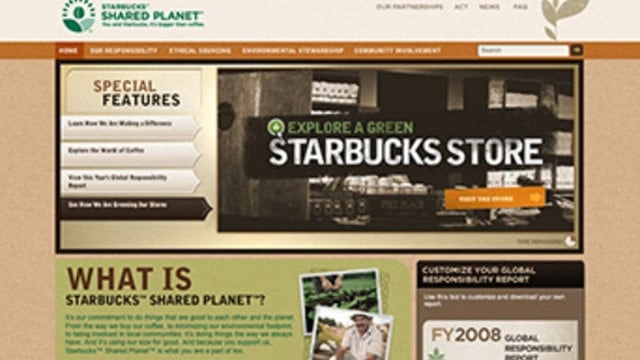
Behind the successful CRM campaigning of Starbucks there were 7 main ingredients included in their emails. Those are enlisted below:
Look at the targets of their CRM campaign. They have strategically targeted the Gold Card members as they are the frequent users of their products. This helped them in keeping a track of their existing Gold Card members with an updated information. When this member brag about their gift in social media, the word spread about their campaign will motivate others to do their best to be the Gold card member of Starbucks.
It covers the basics and makes it center of attraction for the customers. The event shows the benefits of being a regular user of the Starbucks products. This all is possible for their database of birthdays.
Multichannel uses
They are promoting this in different platforms. Email acknowledgment increases the excitement of receiving the redeemable postcard on their birthday which again is an effective use of different channels.
Multipurpose benefits
Starbucks Corporation is not just wishing someone on their birthday through their mails but also asking them to confirm their drinks and making them to update their database about their info. They made and offer increasing the motivation level and trust of their customers and this even gave them an opportunity to update their database for better targeting.
Encouraged other to share
Starbucks Corporation strategically planned this event on the birthdays of their customers as they will love to brag about their birthdays on social media platform. This makes it easier to promote their campaign.
Innovative Ideas from the crowd
They have a website named My Starbucks Idea where customers can put their views on the changes of their products. Starbucks have always appreciated new and innovative idea from the customers.
Social Media Platforms
They have given an opportunity to the customers to share their gifts and items received from Starbucks on different social media platforms – Facebook, Twitter etc.
The CRM campaign of Starbucks Corporation is a good example for strategically planning a campaign to make it viral. Campaigning needs new idea and a strategy that and bring together everyone to put their efforts in campaign. Campaign must be so inspiring that people itself are motivated enough to promote it further.
Image Credits: flickr.com, i.vimeocdn.com
Table of Contents
Leave a Comment Cancel Reply
Your email address will not be published. Required fields are marked *
Save my name, email, and website in this browser for the next time I comment.
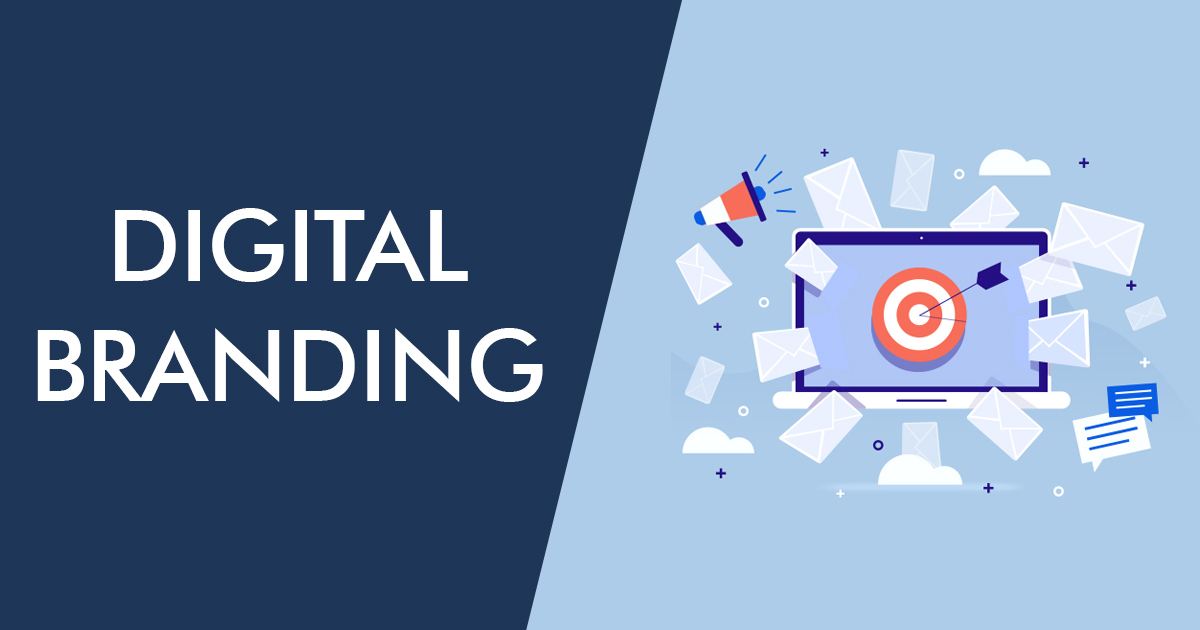
- Covers all Digital Marketing Techniques

- Digital Media Mastery (with Paid Media Expertise)
Discuss With A Career Advisor
Not Sure, What to learn and how it will help you?

Starbucks Case Study - How Starbucks Conquered The Coffee Industry?

Devashish Shrivastava
Starbucks Corporation is an American coffee chain that was established in 1971 in Seattle, Washington. By mid-2019, the organization had a presence in over 30,000 areas around the world. Starbucks has been depicted as the fundamental delegate of "second wave espresso," a reflectively-named development that advanced high-quality espresso and specially simmered coffee. Starbucks now uses robotized coffee machines for proficiency and well-being.
Starbucks serves hot and cold beverages, entire bean espresso, micro-ground moment espresso known as VIA, coffee, caffe latte, full-and free leaf teas such as Teavana tea products, Evolution Fresh squeezes, Frappuccino refreshments, La Boulange baked goods, and bites (for example, chips and wafers); some offerings such as the Pumpkin Spice Latte are explicit to the territory of the store. Numerous Starbucks outlets sell pre-bundled nourishment items, sweltering and cold sandwiches, and drinkware such as cups and tumblers. Furthermore, there are Select "Starbucks Evenings" areas that offer brew, wine, and appetizers.
Starbucks first ended up productive in Seattle in the mid-1980s. Despite an underlying financial downturn with its venture into the Midwest and British Columbia in the late 1980s, the organization experienced rejuvenated success with its entrance into California in the mid-1990s. Starbucks opened an average of two new stores every day between 1987 and 2007. On December 1, 2016, Howard Schultz reported he would leave his position as the CEO and would be supplanted by Kevin Johnson. Johnson accepted the role of the CEO of Starbucks on April 3, 2017, and Howard Schultz resigned to end up as the 'Chairman Emeritus', effective from June 26, 2018. Kevin Johnson is currently serving as the CEO and President of Starbucks.
Starbucks - Company Highlights
| Startup Name | Starbucks |
|---|---|
| Headquarters | Seattle, Washington, United States |
| Sector | Food and Beverage, Hospitality |
| Founders | Gordon Bowker, Jerry Baldwin, Zev Siegl |
| Founded | 1971 |
| Valuation | $148.83B (January 2022) |
| Revenue | $29.02B (FY21) |
| Total Funding | $900 million |
| Parent Organization | Joint Venture Company of Tata Consumer Products and Starbucks Corporation |
| Website | starbucks.com |
Startup Story Of Starbucks Corporation History Of Starbucks Corporation Starbucks - Name and Logo Starbucks Expansion Journey Starbucks Corporation in India Business Strategy Of Starbucks In India Products Of Starbucks Corporation Business Growth Of Starbucks Corporation Over The Years Future Plans Of Starbucks Corporation
Startup Story Of Starbucks Corporation

If you are wondering how did Starbucks start? Then, the story of Starbucks started back in 1971, when the company was a roaster and retailer of whole bean and ground coffee, tea and spices with a single store in Seattle’s Pike Place Market.
Zev Siegel stated that at that time he knew the coffee industry inside and out, he was well-versed, especially with the gourmet end of the industry. Besides, he was also known as the most educated coffee guy in the country at that time. So, the three college friends - Zev Siegel, Jerry Baldwin and Gordon, started out with their coffee bean shop and roastery at Seattle’s famous Pike Place Market in 1971. Eventually, they found a mentor in Alfred Peet, who was the founder of Peet’s Coffee and the man responsible for bringing custom coffee roasting to the U.S. and started with the coffee business in full swing. Starbucks initially began by selling coffee beans that were roasted by Peet's, a gourmet coffee company in Berkeley, California, and later on, started roasting on their own.
History Of Starbucks Corporation
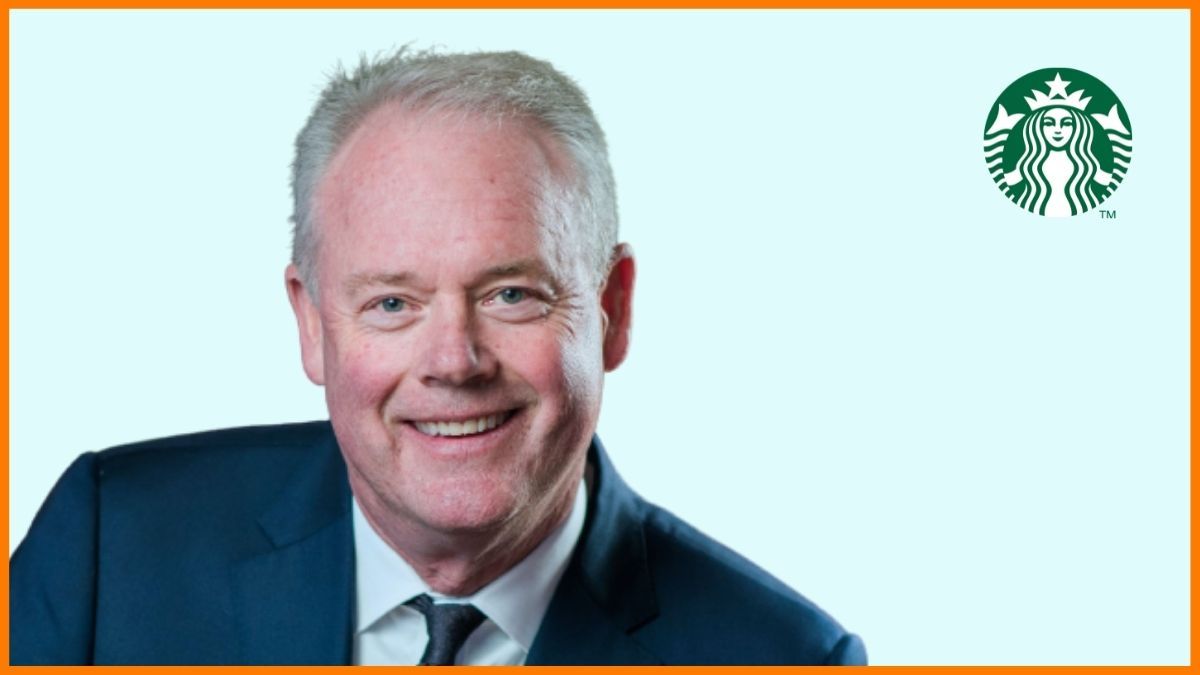
The first Starbucks store was initiated in 1971 in Washington by 3 individuals who met while they were studying at the University of San Francisco: English educator Hun Baldwin, history educator Zev Siegl, and author Gordon Bowker. The trio was encouraged to sell top-notch espresso beans and hardware after businessman Alfred Peet showed them his style of simmering beans.
During this time, the organization sold simmered, entire espresso beans. During its first year of activity, Starbucks bought green espresso beans from Peet's, and then started purchasing legitimately from producers.
Starbucks - Name and Logo

Bowker reviews that Terry Heckler, with whom Bowker claimed a publicizing office, thought words starting with "st" were ground-breaking. The organizers conceptualized a rundown of words starting with "st" and in the long run arrived on "Strabo," a mining town in the Cascade Range. The team then finalized on "Starbuck," the name of the young chief mate in the book "Moby-Dick".
Starbucks has given too many slogans/taglines already among which the most popular one is - " Brewed for those who love coffee".
Starbucks Expansion Journey

In 1984, the first proprietors of Starbucks, driven by Jerry Baldwin, acquired Peet's. During the 1980s, all-out offers of espresso in the US were falling. However, offers of strength espresso expanded, shaping 10% of the market in 1989; it stood at just 3% in terms of market share in 1983. By 1986, the organization worked six stores in Seattle and had just barely started to sell coffee.
In 1987, the first proprietors sold the Starbucks chain to the previous manager Howard Schultz, who rebranded his II Giornale espresso outlets as Starbucks and immediately extended. Starbucks then launched its outlets outside Seattle at Waterfront Station in Vancouver, British Columbia, and Chicago, Illinois. By 1989, 46 stores existed over the Northwest and Midwest, and every year Starbucks was simmering more than 2,000,000 pounds (907,185 kg) of coffee. At the hour of its first sale of stock (IPO) on the financial exchange in June 1992, Starbucks had 140 outlets with an income of $73.5 million, up from $1.3 million in 1987.
The organization's fairly estimated worth was $271 million at this point. The 12% segment of the organization that was sold raised around $25 million for the organization, which encouraged a multiplying of the number of stores throughout the following two years. By September 1992, Starbucks' offer cost had ascended by 70% to more than multiple times the income per portion of the past year. In July 2013, over 10% of in-store buys were made on the client's cell phones utilizing the Starbucks app.
The organization used the versatile social media stage when it propelled the "Tweet-a-Coffee" campaign in October 2013. People had the option to buy a $5 gift voucher for a companion by entering both "@tweetacoffee" and the companion's handle in a tweet. Research firm Keyhole observed the advancement of the event and a media article from December 2013 detailed that Starbucks had discovered that 27,000 individuals had taken an interest and $180,000 of buys were made to date.

As of 2018, Starbucks is positioned 132nd on the Fortune 500 rundown of the biggest United States organizations by revenue. In July 2019, Starbucks announced a "monetary second from last quarter total compensation of $1.37 billion, or $1.12 per share, up from $852.5 million, or 61 pennies for each offer, a year sooner." The organization's fairly estimated worth of $110.2 billion expanded by 41% in the middle of 2019. The income per share in quarter three was recorded at 78 pennies, considerably more than the estimate of 72 cents.
Starbucks Corporation in India

In January 2011, Starbucks Corporation and Tata Coffee reported designs to start opening Starbucks outlets in India. Despite a bogus beginning in 2007, in January 2012, Starbucks declared a 50:50 joint endeavour with Tata Global Beverages, called Tata Starbucks Ltd. , which would possess and work outlets marked "Starbucks, A Tata Alliance". Starbucks had endeavoured to enter the Indian market in 2007. However, it didn't provide any explanation behind its withdrawal of it.
It was on October 19, 2012 that Starbucks opened its first store, a 4,500 sq ft store in Elphinstone Building, Horniman Circle, Mumbai. Starbucks opened its first cooking and bundling plant in Coorg, Karnataka in 2013 to supply its Indian outlets. The company extended its reach to Delhi on 24 January 2013 by opening 2 outlets. Tata Global Beverages declared in 2013 that they would have 50 areas before the end of the year, with a venture of ₹4 billion ($58 million). The organization did open its 50th store in India on July 8, 2014.
The third city of India to get a Starbucks outlet was Pune, where the organization opened an outlet at Koregaon Park on 8 September 2013. Starbucks opened a 3,000-square-foot lead store at Koramangala, Bangalore on 22 November 2013, making it the fourth city to have an outlet. Starbucks opened the biggest espresso-forward store in the nation at Vittal Mallya Road, Bangalore on 18 March 2019. The store is estimated at 3,000 sq ft and is Starbucks' 140th outlet in India.
Tata Starbucks opened 25 stores between 2017 and 2018, which went up to 30 during 2018-19. On 21 February 2019, CEO Navin Gurnaney reported that Tata Starbucks would use only compostable and recyclable bundling materials over the entirety of its stores from June 2020.

Starbucks reported its entrance in Gujarat on 7 August 2019. The organization opened five stores in Surat and Ahmedabad the following day. Starbucks' leader store in the state is situated at Prahlad Nagar, Ahmedabad, and offers more vegan alternatives than other Indian outlets. CEO Navin Gurnaney expressed that the organization would open more than 30 stores in the 2019-20 financial year, of which 11 have already been opened.
Business Strategy Of Starbucks In India
Starbucks' strategies for business in India seemed rock-solid but the brand wasn't completely immune still. In any case, the world's biggest bistro chain is building its position cautiously via a progression of well-picked steps. Numerous worldwide brands have entered India since the 1990s, being pulled in by its developing and optimistic customer base. Yet, not all have succeeded.
Starbucks isn't the primary contestant in India's composed espresso showcase; so it doesn't have any first-participant advantage. Cafe Coffee Day (CCD) is the market head while Barista Lavazza was the main espresso chain to open for business. Both are valued by the white-collar class. Costa Coffee, Coffee Bean and Tea Leaf (CBTL), and Gloria Jean are valued by the rich group in India.
India is customarily a tea-drinking nation, so espresso chains have concentrated on giving a feel where individuals can unwind and invest energy with one another. This setup implies higher capital expenses. It is different from the US, where the vast majority have a liking for espresso. The Indian buyer base has likewise advanced in the recent decade. What can worldwide brands like Starbucks do to augment their odds of achievement in India? Here are a few thoughts:
Picking a Local Partner
Worldwide brands face the difficult choice of either going solo or tying up with a nearby accomplice. Starbucks' choice to team up with India's TATA Global Beverages demonstrates attention to utilizing different advantages. The TATA Group is one of India's morally determined brands, an observation passed on about Starbucks India too.
Given that India produces espresso beans in just a couple of spots, the other sourcing alternative was bringing in the beans. Be that as it may, this would have raised costs fundamentally.
Tata's espresso plant in Karnataka has been contracted to supply beans to Starbucks' universally, making common cooperative energies. It has contracted to take into account TATA's TAJ SATS, which supplies to TATA's top-notch lodging network – The TAJ. The TATAs are put into the retail part with store brands like Westside, Tanishq, Croma, Star Bazaar, and so forth. Starbucks can use them for information sharing on Indian land, territory points of interest, and handling land administrations. This would enable its very own development to outline. This strategy gives scope for store-in-store deals.
Consistency in Store Arrangements
This keeps up the one-of-a-kind selling purpose of customer experience and allows to pick up economies of scale on CAPEX. Starbucks plans to have a similar store group crosswise over India. However, the size can change depending on financial matters. This is how it works all around. Starbucks wants to provide an agreeable 'café' experience. Having a similar organization gives clients the solace of accepting the equivalent 'Starbucks' vibe any place they go throughout the world.
Keeping the store designs steady means it needs to pick and open new areas stringently, to such an extent that the area can yield a throughput by the venture. Its methodology in-store arrangement is different from CCD, which has picked various configurations to tap the potential interest in any region. CCD has opened a couple of premium outlets dependent on the area's customer profile . It has additionally gone for non-store organizations like takeaway booths and candy machines. Be that as it may, Starbucks may expect that such non-store configurations may weaken its image esteem.
Estimating the Pace of Expansion
India is the place where an inability to screen primary concerns has tossed numerous organizations out of the rigging. So, a top-line just approach doesn't work here. Since Starbucks needs to pick new areas stringently by its equivalent configuration approach, it has decided on a deliberate pace of extension. It is concentrating on the budgetary feasibility of every outlet, as opposed to going for an aggressive development plan which may have brought about rehashed calls for capital.
This operational process is different from its system in the USA and China where it has fabricated scale by opening stores in pretty much every area – being the main port-of-call for espresso by basically being all over the place. CCD's methodology behind adaptable store organizations was to guarantee there is a CCD bistro at a simple reach. It is intriguing to check its normal store gainfulness given its scale.
Guaranteeing Top-Authority Backing and Responsibility
Top initiative responsibility from the two sides of the organization, Tata and Starbucks, has been plentifully clear. Starbucks took as much time as is needed to enter the market (6 years), recognizing that India was a mind-boggling market and required cautious passage arranging. The two sides have spoken finally about their dedication and shared their future plans to give their business a new direction toward growth.
Altering Contributions to Suit Indian Market and Client Needs
Being adjusted to Indian culture, tastes, and inclinations conveyed at a suitable "esteem" guarantees customer importance, construct, and continued utilization. Starbucks mirrors this comprehension – as observed through a blend of western staples, a wide scope of intriguing Indian tidbits similar to confined refreshments on the idea. Since its experience ( and item as well, however to a lesser degree) is its image guarantee, its test lies in conveying an all-around steady, yet locally significant brand experience.
The stores, or the "third spot" as Starbucks calls them, have been altered likewise. The stores don't pursue the worldwide layout and appear to have been planned with consideration, with neighbourhood contacts consolidated. Stores in various urban communities have been structured unexpectedly, mirroring the neighbourhood culture – for e.g., New Delhi's store has ropes and chat on the dividers and henna designs on the floor, though the Pune store has a rich showcase of collectables and copper.
There appears to be sufficient utilization of shading – something missing in the US. The stores have been intended to convey a particular, premium café experience, predictable, and in a state of harmony with the one conveyed over the rest of the world.

Making Inventive and Restricted Plan of Action
Starbucks appears to have made a confined plan of action, planned for conveying a universally reliable item and involvement with locally-focused costs. The Tata group conveys a major sourcing advantage (attributable to its quality over the generation chain, developing, broiling, and exchanging espresso), yet it has just gone past that to develop and support associations with nearby espresso cultivators – putting resources into structure economical cultivating rehearses. All of Starbucks' espresso is sourced locally, a first-ever for the organization.
Scaling up using Arrangements and Organizations
The Tata organization is the genuine overthrow in the Starbucks passage story. Having Tata as an accomplice is gigantically profitable, not due to the validity and strength it offers, or because it coordinates the scale and stature of Starbucks as an organization.
It offers numerous advantages catalyzing pretty much every market section achievement variable - for example, The Tata group has involvement in the retail business , a solid reputation in advancing new pursuits, gives a sourcing advantage through Tata espresso, offers access to high traffic areas using its lodgings and other retail outlets, guarantee excellent nourishment and refreshment supply through its F&B business and so forth.
Furthermore, the potential for an effective organization is amazingly high given Starbucks' and Tata's mutual qualities – the two of them have a solid social inner voice and are resolved to "give back" to the general public and network.
Influencing India for Worldwide Items
Not long after it finished its first year, Starbucks reported that it was serving top-quality Indian Arabica espresso as "Indian coffee" in different markets. Another world-class office for cooking and bundling has just been initiated in Coorg, Karnataka; the results of which are to be analyzed in India and abroad.
Overseeing Discernment and Guidelines
This viewpoint is tied in with structure, a solid positive observation and a picture for the business and brand crosswise over key outer partners and crowds – incorporating the administration, corporate accomplices, networks inside the eco-framework, and customers on the loose. Given what Starbucks has figured out how to accomplish in a year and a half since dispatch, it appears to be genuinely evident that its thought combined with the Tata advantage (critical reach and impact) has helped in developing solid connections and a positive picture with key outside partners and voting demographics.
Engage Nearby Association
Starbucks is by all accounts constructing a nation-explicit activity with nearby individuals in charge and overall unmistakable customer interface focuses, giving them the necessary position to coordinate and work. There is overwhelming interest in enlisting the perfect individuals and giving the essential preparation – to install and instil the organization's culture and administration models.
Along these lines, how has Starbucks fared against the McKinsey spread out variables for long-haul India achievement? Its accomplishments against the scorecard look noteworthy. With thorough vigorous passage arranging and brilliant and quick execution, the multi-month-old endeavour appears to have impressive force, making purchaser and network-driven ventures and focused on sustaining its centre business and brand. It appears to be very much set to "win" in India.
Whether Starbucks will collect a huge piece of the overall industry and accomplish its objective of India being among its best 5 markets over the long haul is not yet clear. It's still early days, yet for the organization, this appears to be an incredible beginning and a great globalization model for multinationals looking for an India section.
Products Of Starbucks Corporation
Aside from the typical items offered globally, Starbucks in India has some Indian-style item contributions, for example, Tandoori Paneer Roll, Chocolate Rossomalai Mousse, Malai Chom Tiramisu, Elaichi Mewa Croissant, Chicken Kathi Roll, and Murg Tikka Panini to suit Indian customers. All coffees sold in Indian outlets are produced using Indian broiled espressos by Tata Coffee. Starbucks additionally sells Himalayan packaged mineral water. Free Wi-Fi is accessible at all Starbucks stores.

In January 2017, Tata Starbucks presented Starbucks' tea image "Teavana". Teavana offers 18 unique assortments of tea in India. One of the assortments called the India Spice Majesty Blend was explicitly created for the Indian market and is just accessible in India. India Spice Majesty Blend is a mix of full leaf Assam dark tea injected with entire cinnamon, cardamom, cloves, pepper, star anise, and ginger. On 15 June 2015, Tata Starbucks reported that it was suspending the utilization of fixings that had not been affirmed by the Food Safety and Standards Authority of India (FSSAI).
The organization didn't indicate what the fixings were or which items they were utilized in. The organization additionally expressed that it was applying for FSSAI endorsement for these ingredients.

As per the Latte Index positioning of the expense of a tall hot latte at Starbucks in 44 nations, India was the fifth most costly nation to buy the drink dependent on January 2016 costs. The record distributed by US-based buyer research firm ValuePenguin found that a tall hot latte cost $7.99 in India, far higher than the $2.75 it costs in the least expensive nation, the United States, yet much lower than the $12.32 in the most costly nation, Russia .
Tata Starbucks propelled the Starbucks Delivers program in mid-2019. The administration offers home conveyance from Starbucks outlets through an organization with Swiggy. The administration was first propelled in Mumbai, with designs to turn it out to other cities.
In its menu, the Tata Starbucks company has launched ice-creams as their new products. The frozen delights are available even in flavours like java chip and caramel macchiato among others and will come in takeaway tubs and single scoops. The ice-creams are now available in 50-60% of the Starbucks stores.
Business Growth Of Starbucks Corporation Over The Years

Tata Starbucks, a 50:50 joint endeavour between Tata Global Beverages and Starbucks Coffee of the US, has announced a 30% top-line development in financial 2018-19, driven by new store openings and improved execution. Tata Starbucks, which is hoping to make back the initial investment in the current money, has opened 146 stores to date. Tata Starbucks announced "twofold digit top-line development - 30% for the entire year, driven by new stores and improved store execution," Tata Global Beverages Ltd (TGBL) said in a financial specialists' introduction. Tata Starbuck's income for 2018-19 is required to be approximately INR 450 crores.
TGBL said Tata Starbucks opened 30 outlets in the past financial year, out of which 15 new stores were opened during the last quarter of the money-related year. The organization claimed detailed benefits at the store level; all urban areas were likewise productive, and additionally saw an ascend in nourishment share in general deals.
The Starbucks company has added around 40 stores in FY21 but the company had recorded a 33% Y-O-Y fall in its revenues during the same fiscal. According to the Sushant Dash, CEO of Tata Starbucks, the recovery that the company has seen after the second wave of COVID-19 was better than what it saw after the first wave of the deadly pandemic. The quarterly growth after Q2 FY22 was 120% more than what it saw during the same period in the previous fiscal. The company has hugely focused on home deliveries ever since the pandemic broke out. It has already addressed concerns associated with the spillage and other challenges pertaining to home delivery, which contributed to over 18% of the total sales that the company witnessed this fiscal, as per the reports in November 2021. Furthermore, the company has also added ice-creams to their menu in flavours like java chip and caramel macchiato. The Sanjeev Kapoor menu is another thing that has been freshly launched by Tata Starbucks. Besides, the company also launched a one-litre freshly brewed beverage and at-home coffee.

Future Plans Of Starbucks Corporation
Tata Starbucks Pvt. Ltd. is looking to forcefully grow its impression in the Indian market with its eyes on the quickly spreading "espresso culture" among the twenty to thirty-year-olds and upwardly versatile customers. Tata Starbucks, a JV between US-based Starbucks Coffee Company and Tata Global Beverages Ltd, hopes to set up altogether more number stores this monetary than it did previously.
Starbucks is hopeful about solid business development in India throughout the following year as it means to leave red in monetary numbers after 2020. "Our proceeded with development in topline and reasonable methodology towards extension will enable us to accomplish make back the initial investment by March 2020," Navin Gurnaney, CEO, Tata Starbucks disclosed to Business Line in the wake of declaring five new stores in Gujarat - three in Ahmedabad and two in Surat. Gurney likewise included, "First time in quite a while, we are opening five stores in any state in one go.
Gujarat is a significant market for us. In the wake of opening these five stores on Thursday, the all outnumber of hides away goes up to 157 in India." Starbucks entered India with its first store opened at Mumbai in 2012. Of the 157, the organization has opened all out 11 stores so far in this financial, as against complete 30 stores opened during 2018-19. It takes into account 270,000 clients each week in India. The organization had announced a turnover of INR 442 crores for the monetary 2018-19.
"Espresso business in India is developing significantly. The espresso culture is being initiated by recent college grads, upwardly versatile, and individuals who travel and get brand. Two years back, we set up 25 stores (in a year). During the last financial 2018-19, we included 30 stores.
This year we will beat that number considerably and by end of March 2020, we will have included a lot a greater number of stores than we included in the past," Gurney said. With per store venture prerequisites being evaluated at INR 1.7-2 crores, the complete CAPEX plan by the organization works out in overabundance of INR 50 crores during current monetary on the off chance that it opens more number of stores than a year ago. Be that as it may, Gurnaney ceased from giving venture figures for 2019-20.
The organization is likewise open to different open doors for development including inorganic development through acquisitions. Be that as it may, when tested about any probability of a venture plan in the espresso chain Cafe Coffe Day (CCD), Gurnaney denied estimating any discussions for securing. "We are very hopeful about India. We will be attentively forceful (to extend). (At present) we are not in discussions with anyone for obtaining.
In any case, we are hoping to develop constantly," he included. With an end goal to upgrade the client experience, Starbucks is presenting new nourishment things, taking into account all client needs including breakfast and lunch. The income share from nourishment things is right now around 25%, even as it keeps on developing with new things to meet the client's needs.
Who founded Starbucks?
Starbucks was started by Hun Baldwin, Zev Siegl, and Gordon Bowker in 1971.
Where was the first Starbucks started?
Starbucks was started in Pike Place Market, Seattle, Washington, United States.
When was Starbucks started in India?
Starbucks was launched in India in 2012.
What is the revenue of Starbucks?
Starbucks revenue was recorded $29.02 billion in 2021.
How many Starbucks stores are there worldwide?
There are 33,830 Starbucks stores in the world as of 2021.
Must have tools for startups - Recommended by StartupTalky
- Convert Visitors into Leads- SeizeLead
- Manage your business smoothly- Google Workspace
- International Money transfer- XE Money Transfer
Apoorva Goyal of Insight Partners Reveals How They Invest in and Scale Tech Startups to Global Success
In our exclusive interview with Mr. Apoorva Goyal, Vice President of Investments at Insight Partners, he shares his inspiring journey from a Marwari family business to leading global tech investments. Mr. Goyal shares his passion for supporting high-growth Indian startups and Insight Partners' role in scaling tech innovators. He
Om Narayan Singh on How Digital Gramin Seva Is Transforming Rural India With Tech-Driven Solutions
In this exclusive interaction with StartupTalky, Mr. Om Narayan Singh, the visionary founder of Digital Gramin Seva (DGS), discusses his mission to bridge the digital divide in rural India by bringing essential services and technology to underserved communities. He shares the challenges he has faced, the solutions he’s developed,
To Enhance Madhya Pradesh's Electronics and Semiconductor Industry, MPSeDC Signs MoU with IESA
The electronics and semiconductor sector in Madhya Pradesh has taken a major step forward with the signing of a Memorandum of Understanding (MoU) between the India Electronics and Semiconductor Association (IESA) and the Madhya Pradesh State Electronics Development Corporation (MPSEDC). During the "Interactive Session on Investment Opportunities in Madhya
Namma Yatri Zero-Commission Cab Service Is Now Live in the Delhi-National Capital Region!
In Delhi National Capital Region (NCR), Moving Tech Innovations, the parent company of Namma Yatri, has officially launched its new lifelong zero-commission cab service called "Yatri". The app, which provides community-driven travel solutions and is part of the ONDC Network, has seen substantial expansion with the introduction. Following

COMMENTS
Founded in 1971, Starbucks operates a chain of coffeehouses and roastery reserves, with headquarters in the United States of America. As of writing, they had 33,833 stores in 80 countries. This article is a Starbucks CRM case study that examines the key strategies behind the company's growth.
Starbucks' Customer Management Case Study. February 19, 2024. Starbucks, once a single storefront in Seattle, has burgeoned into a global coffee powerhouse, renowned for its quality brews and exceptional customer service. This transformation wasn't just about expanding its footprint; it centered on mastering customer management —a ...
1. Starbucks focuses on customer relationship. management by integrating communication with customers. 2.Seven attributes of marketing mix were implemented. 3.Main objective of marketing mix program is to create communication and deliver value to customers. 4.Starbucks has adopted a brand differentiation strategy through product uniqueness.
The "My Starbucks Idea" concept was based on a core belief: customers know what they want. The company's commitment to this concept led to fans submitting over 150,000 ideas, of which hundreds were adopted. And these weren't just run-of-the-mill suggestions, either - they include fan favorites like hazelnut macchiatos.
Starbucks Change Management Case Study. Tahir Abbas March 4, 2023. Change is a constant in any business, and successful organizations must adapt to changes in the industry, market, and consumer preferences to remain competitive. The ability to manage change is crucial to the survival of businesses in today's dynamic market environment.
Few recommend actions to boost short-term sales during promotion periods are listed below. 1. To maximize customer response: Collect data from existing members for a certain time period, determine customer-to-promotion category match for individual customers, and send single offers accordingly. 2.
The paper also investigates Starbucks' various CRM strategies, such as its mobile app, loyalty programme, and customer service. Finally, the paper summarises the key findings and offers insights into how Starbucks can continue to leverage CRM to improve customer loyalty and drive business growth. It additionally has primary data demonstrating ...
Starbucks Corporation, an American company founded in 1971 in Seattle, WA, is a premier roaster, marketer and retailer of specialty coffee around world. Starbucks has about 182,000 employees across 19,767 company operated & licensed stores in 62 countries. Their product mix includes roasted and handcrafted high-
The Starbucks experience thus serves as a compelling case study of the power of analytics to drive business success and growth in the food and beverage sector. ... In the case of Starbucks, custom software solutions have been the key to integrating complex analytics tools seamlessly across various facets of its business, from customer service ...
Starbucks Case Study: Innovation in CRM strategies, means of enabling E-Commerce , Oxford University Press. Stavroula Panagiotaropoulou. See Full PDF Download PDF. See Full PDF Download PDF. Related Papers. DAILY LESSON LOG. Lynde Mae Resma. Daily Lesson Log Template (downloaded from the net) I do not own the document.
Over 50% of customers say they experience buyer's remorse or negative emotions such as guilt and regret after making a purchase. All this results in a rising rate of returns and customers ...
Starbucks CFO Rachel Ruggeri detailed, "Capital expenditures in fiscal 2022 are expected to total approximately $2 billion, up from $1.5 billion in fiscal 2021 and back to pre-COVID levels ...
Beyond benefits like $30 million saved annually in IT costs, Starbucks credits ERP for supporting tremendous business growth since 2008: 25% increased earnings in 2011 post-ERP implementation. 60% revenue growth from 2011-2019 with over 10,000 new store openings. Expansion into 5 new international markets.
According to Joseph Michelli, that something else is the Starbucks Experience. He claimed that the magic behind the Starbuck brand's success lay in its ability to "create personalized experiences in every store, secure customer loyalty, stimulate business growth, generate profits, and energize employees—all at the same time.".
2 thoughts on " Case Study: Starbucks' Success Elevating Customer Experience with Customer Journey Mapping " Pingback: The Power of Email Marketing KPIs for Food and Beverage Brands Pingback: A Guide to Customer Journey Analytics in 2024 and Leveraging Predictive Analytics for Enhanced Customer Insights - 360head digital marketing agency
This case study will explore how Starbucks uses this knowledge to stay ahead of the curve. This approach underscores Starbucks' commitment to reaching beyond the storefront, offering not just coffee but an experience tailored to its discerning clientele.So summed up, their target audience is-. High-income spenders.
Starbucks' Operations Management - 10 Critical Decisions. 1. Goods and Services require decisions on the characteristics of business processes to meet the target features and quality of Starbucks products. This decision area of operations management affects other areas of the coffeehouse business. For example, the specifications of ...
CRM: CASE STUDY STARBUCKS | PAGE 6 Customer Research & Insights Shortly before COVID-19 escalated in the country, Starbucks opened its first Canadian pick- up-only store in Toronto on February 4, 2020 - marking the second store in the world after New York City's Penn Plaza. This store was specially designed to serve those in a hurry who need to order in advance on the mobile app, monitor ...
Their products include different kinds of coffee drinks. Starbuck is an American Coffee Company started in 30 th march, 1971. Their founders are Jerry Baldwin, Zev Siegel, and Gordon Bowker. Starbucks Corporation is headquartered at 2401 Utah Avenue South, Seattle, Washington, United States. Till date they have 22,551 number of shops worldwide.
CRM processes that help form individualized relationships with customers (to improve customer satisfaction) and provide the highest level of customer service to the most profitable customers. CRM processes that provide employees with the information they need to know their wants and needs, and build relationships between the company and its ...
Starbucks Case Study. Starbucks Corporation is an American coffee chain that was established in 1971 in Seattle, Washington. By mid-2019, the organization had a presence in over 30,000 areas around the world. Starbucks has been depicted as the fundamental delegate of "second wave espresso," a reflectively-named development that advanced high-quality espresso and specially simmered coffee.